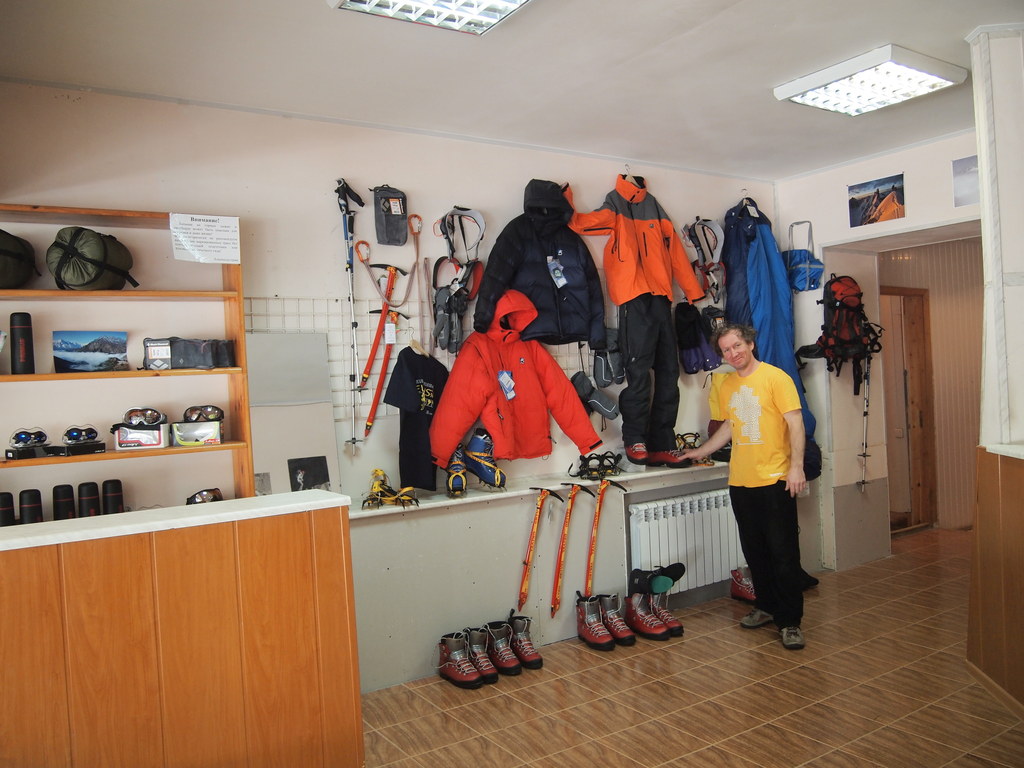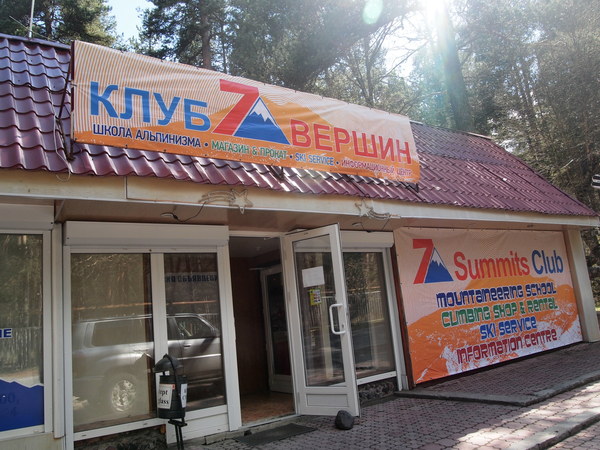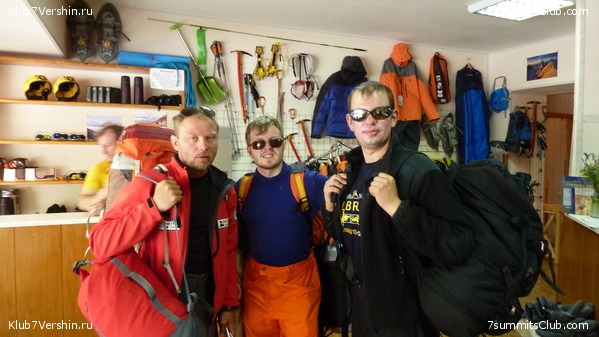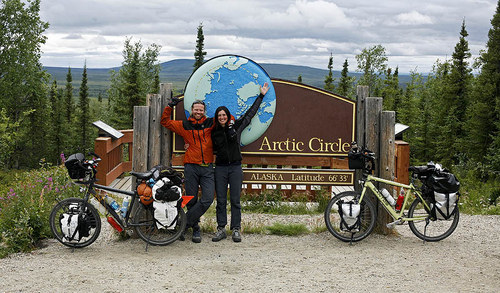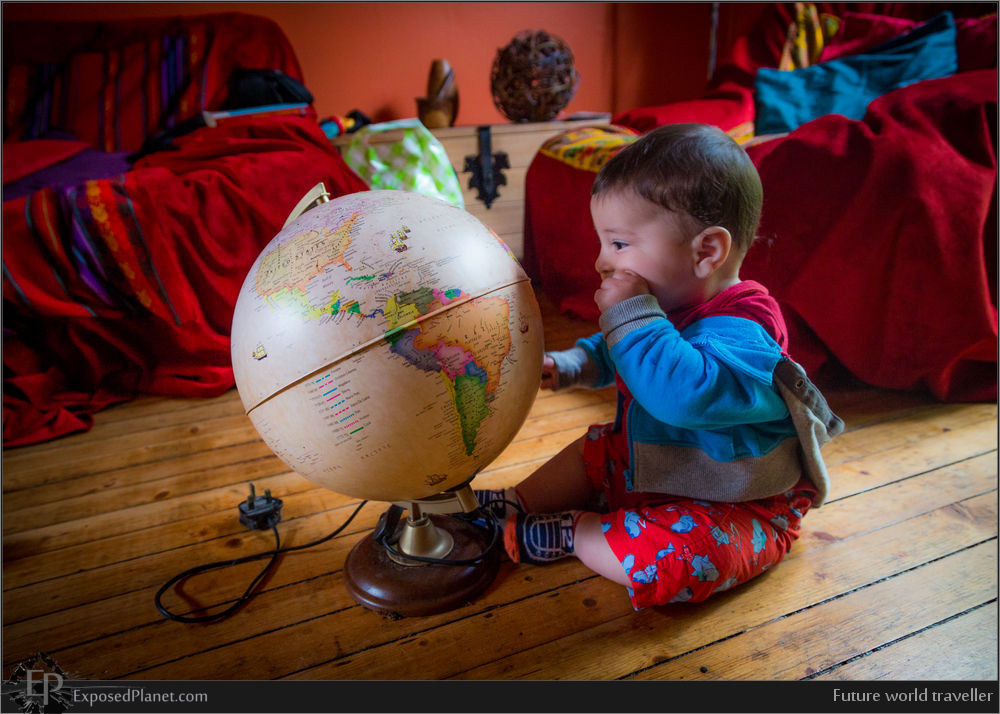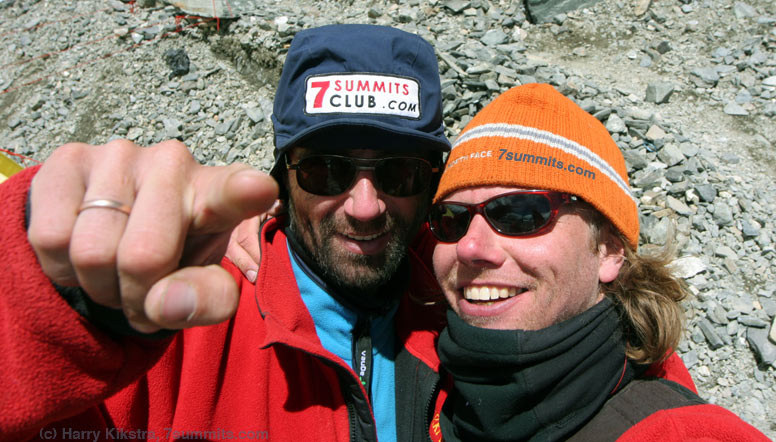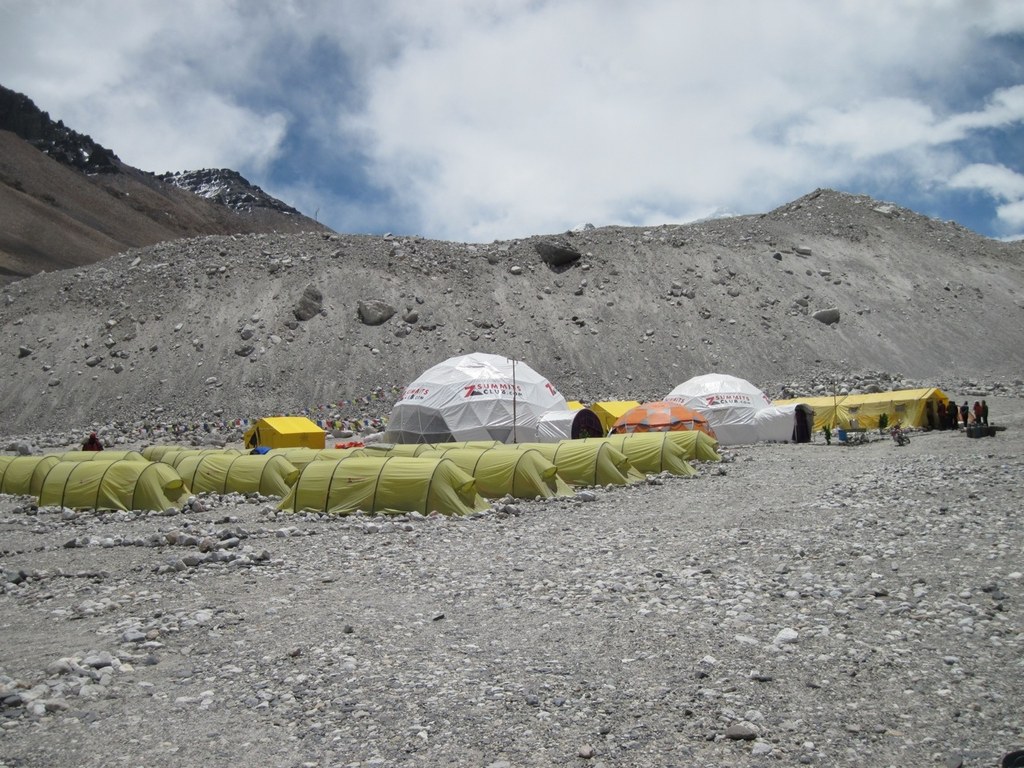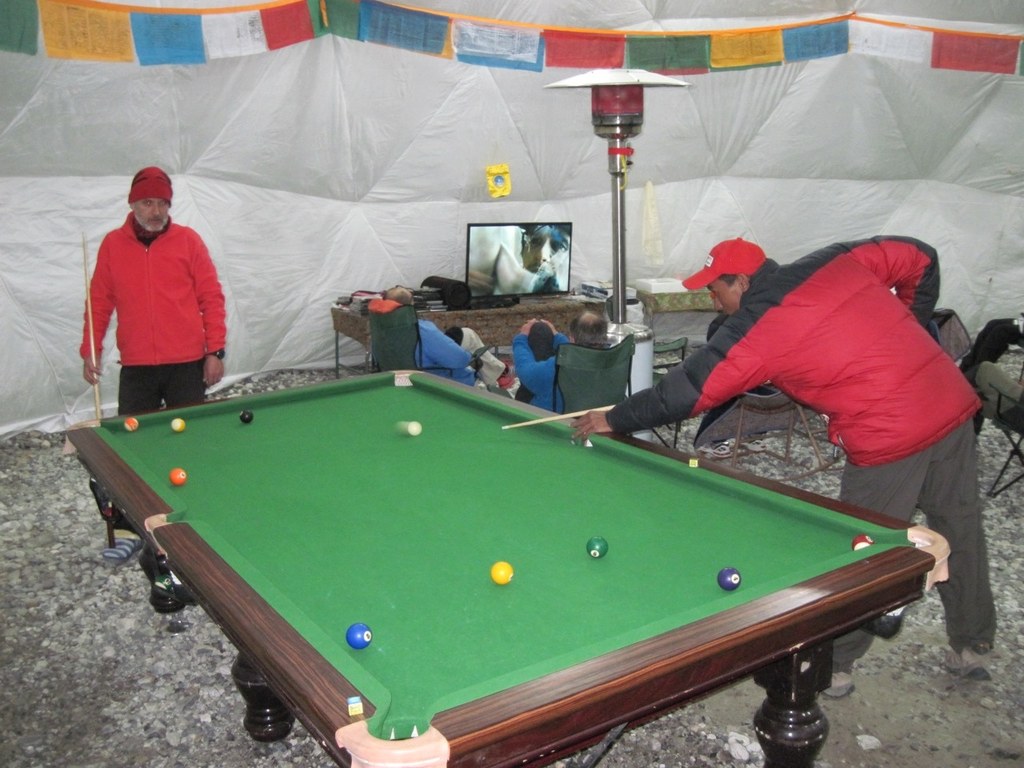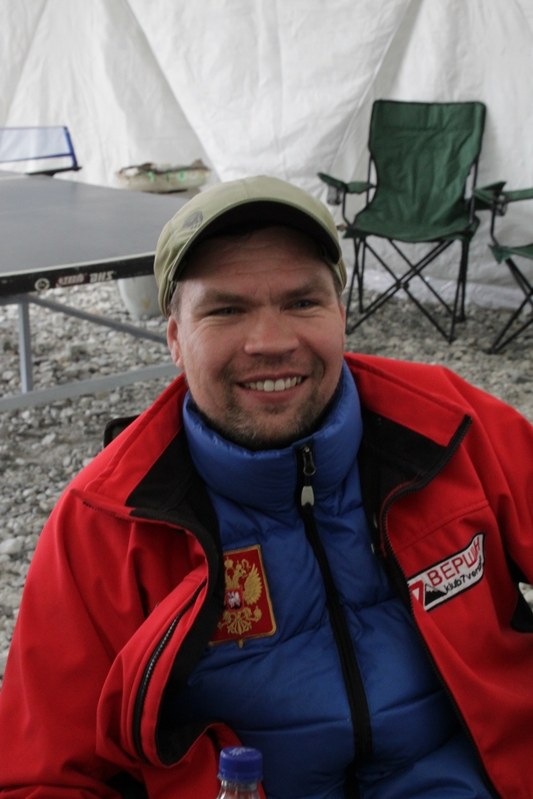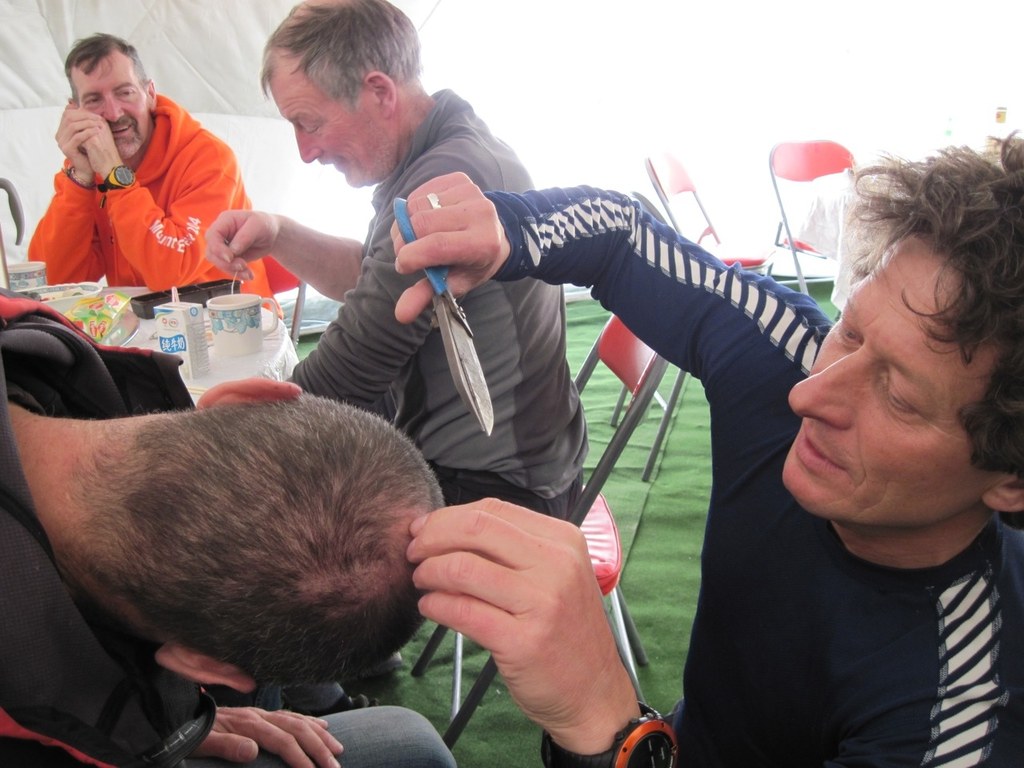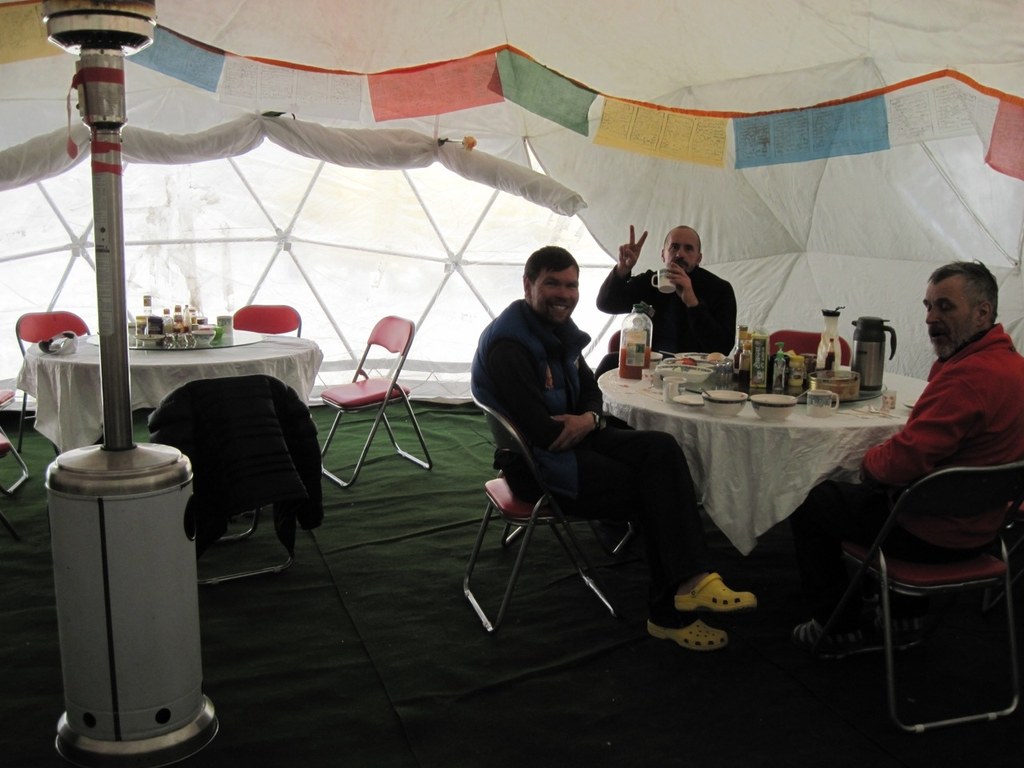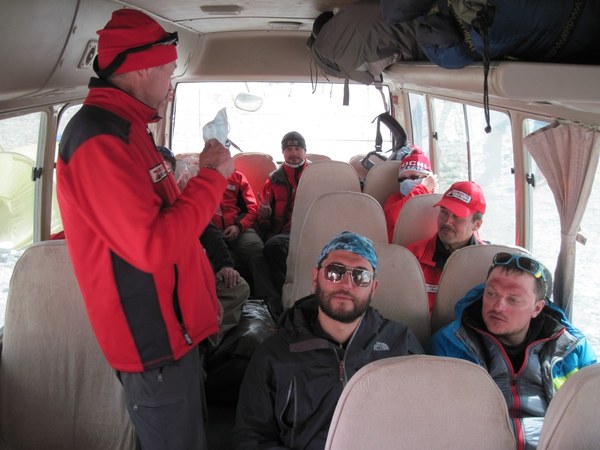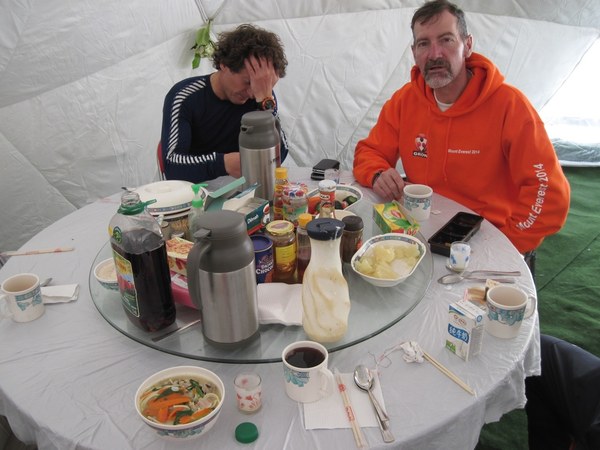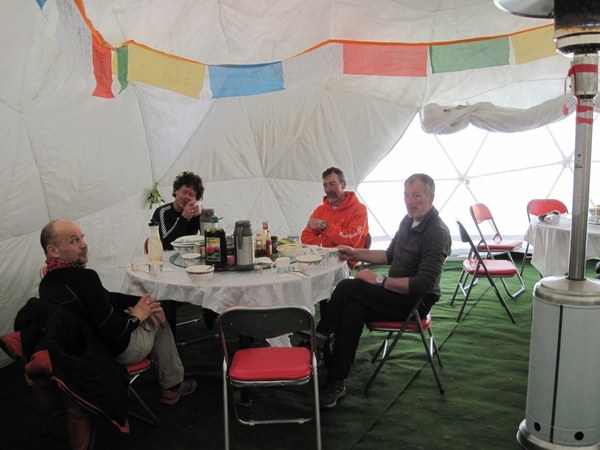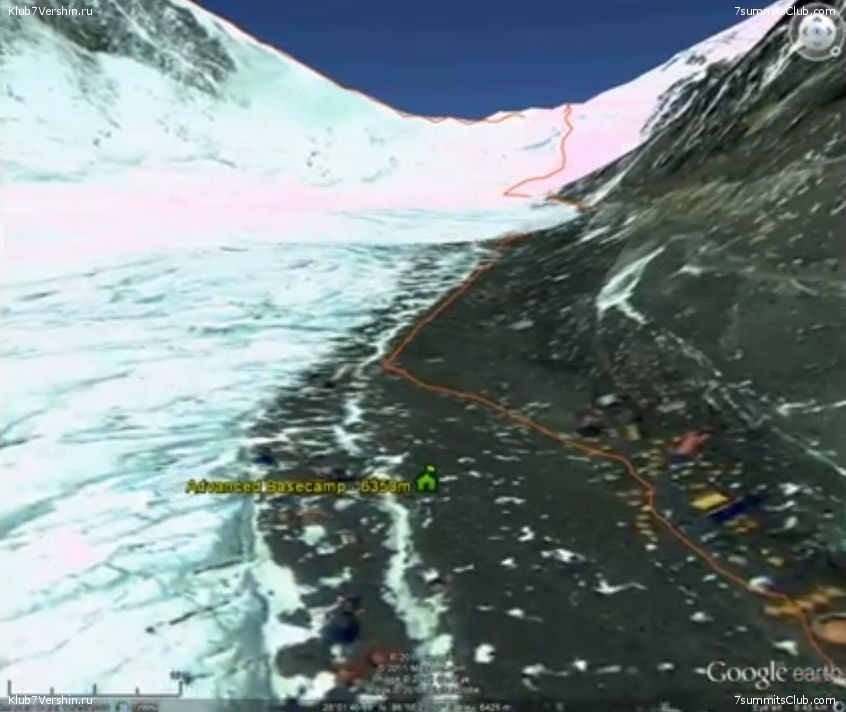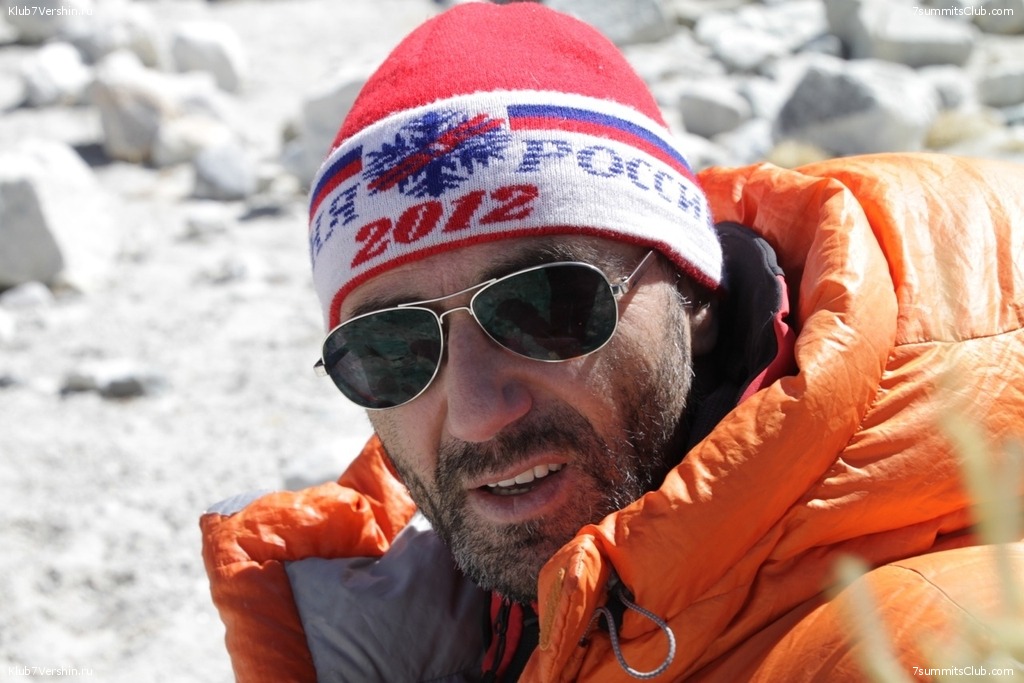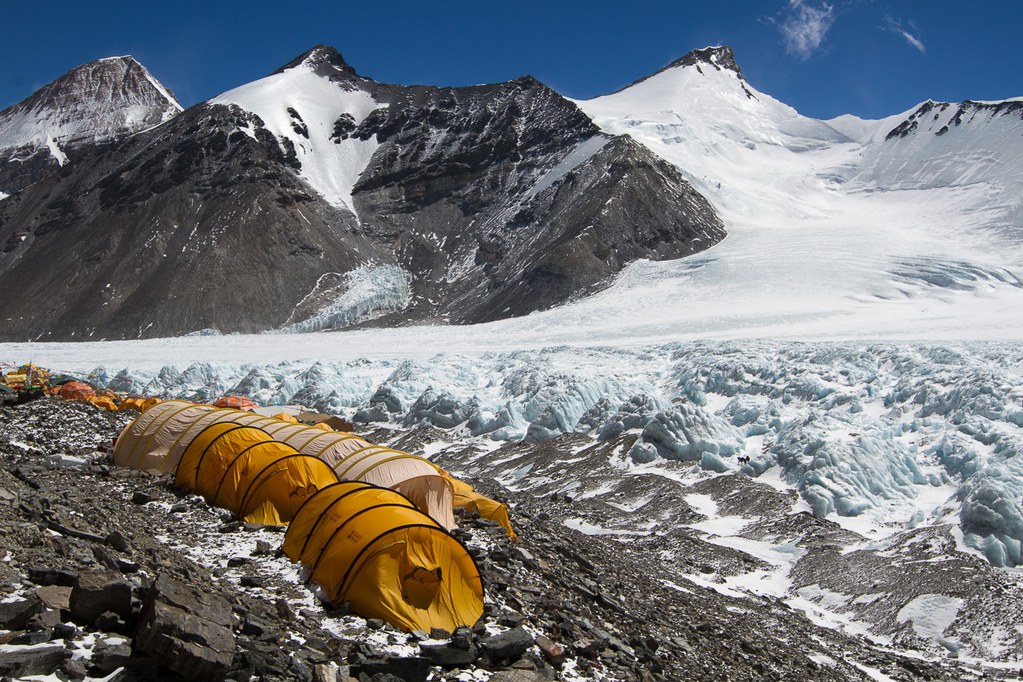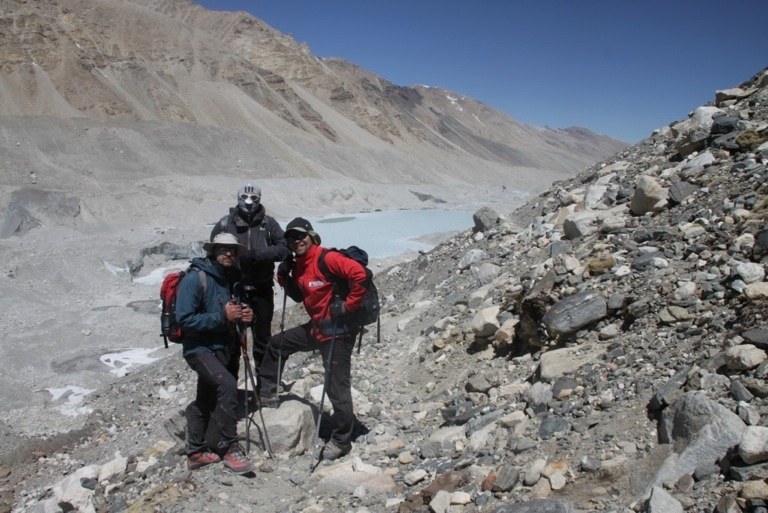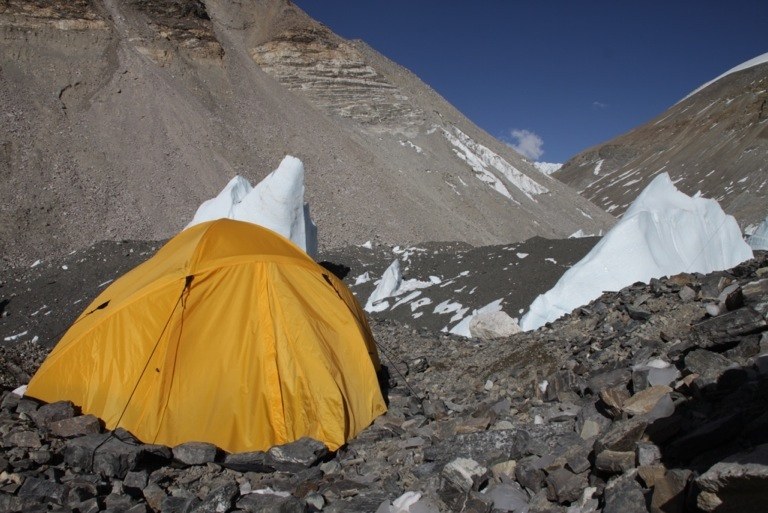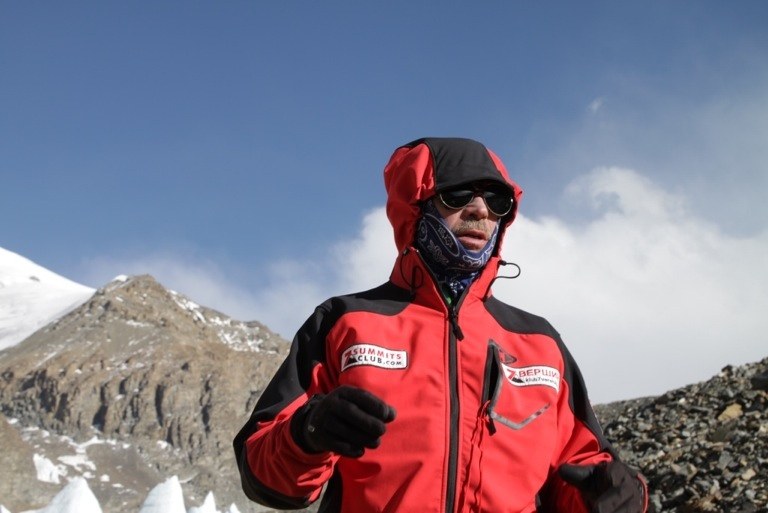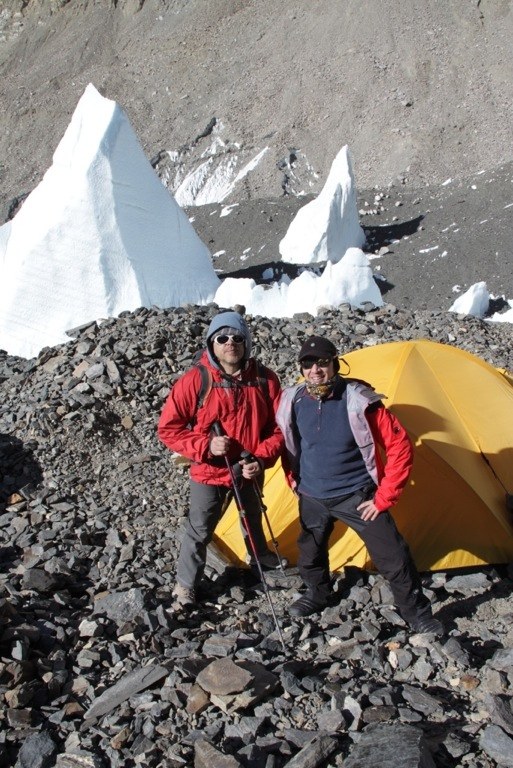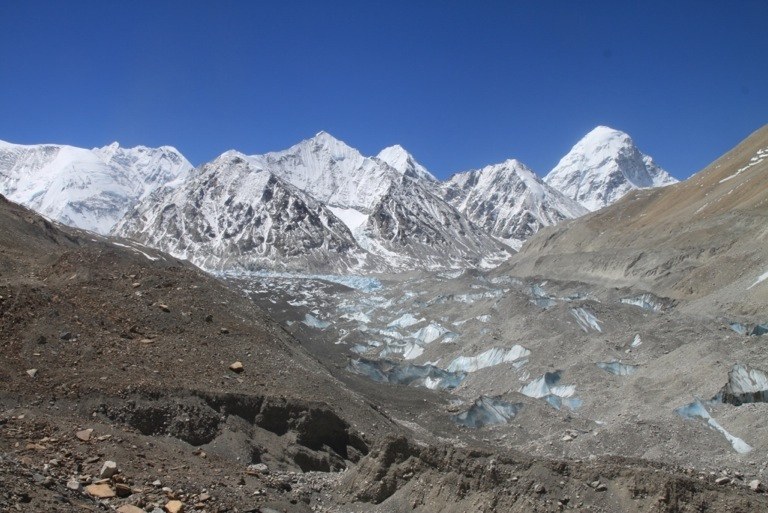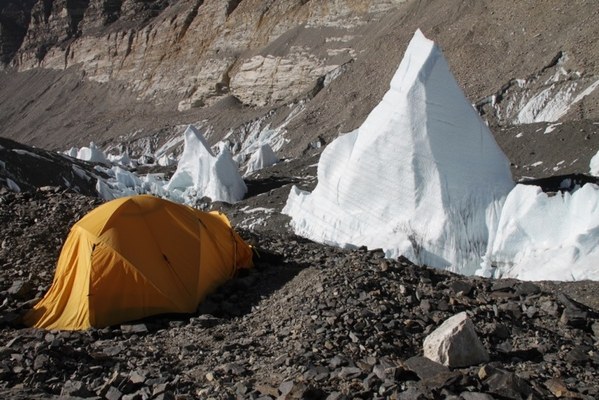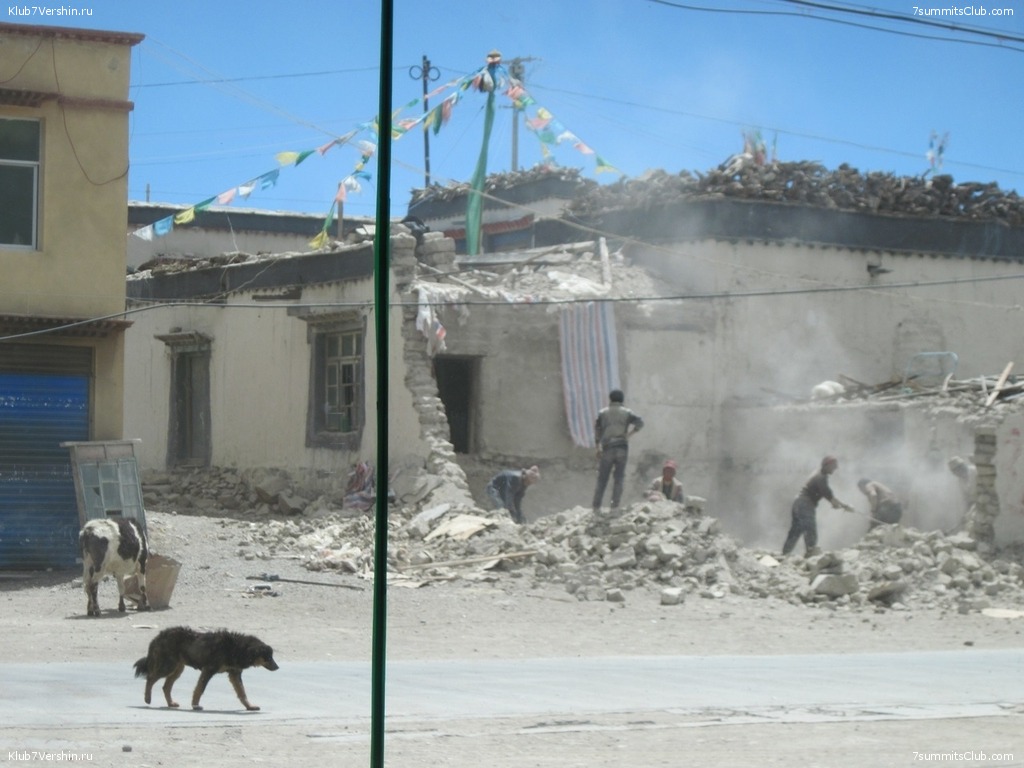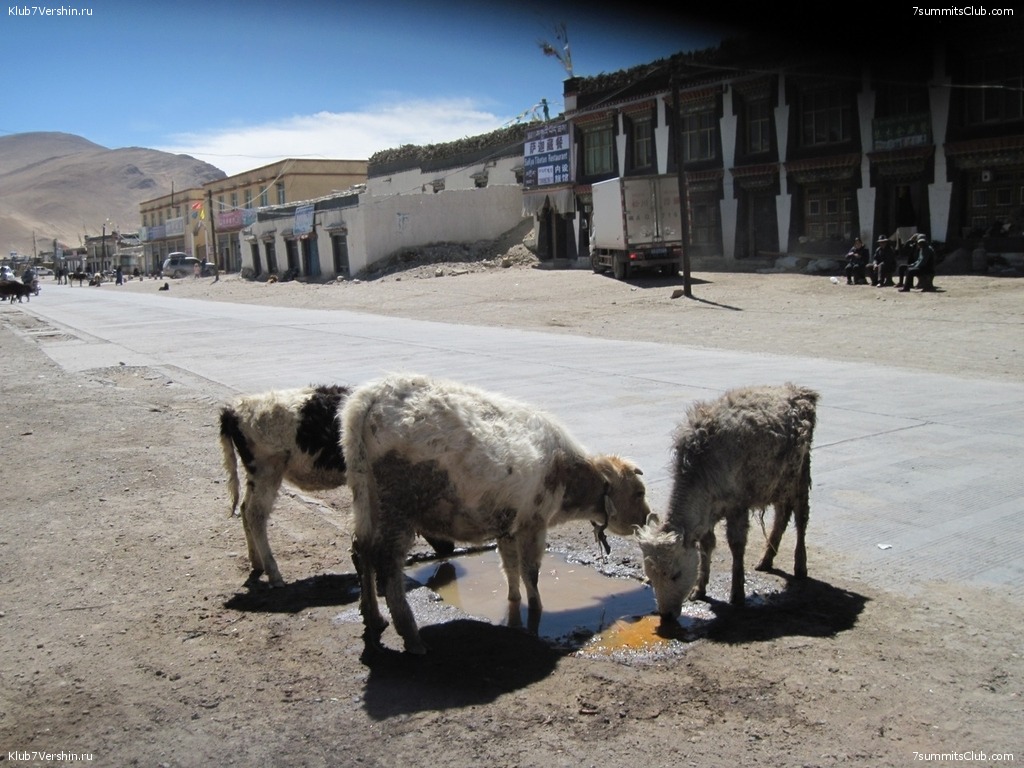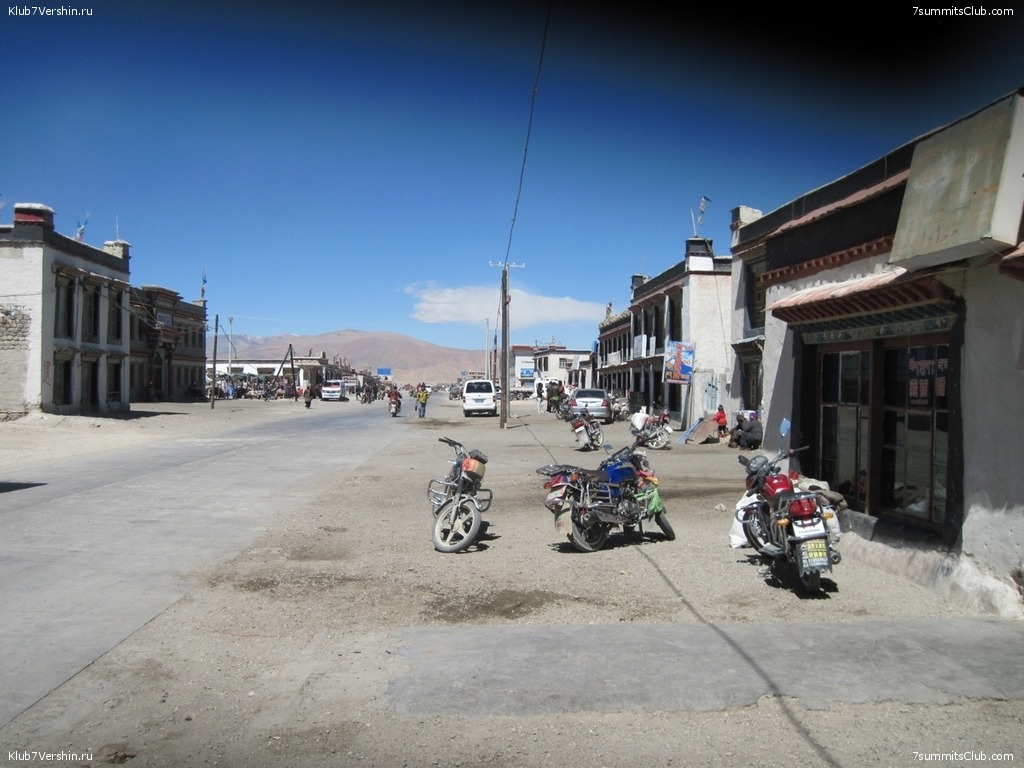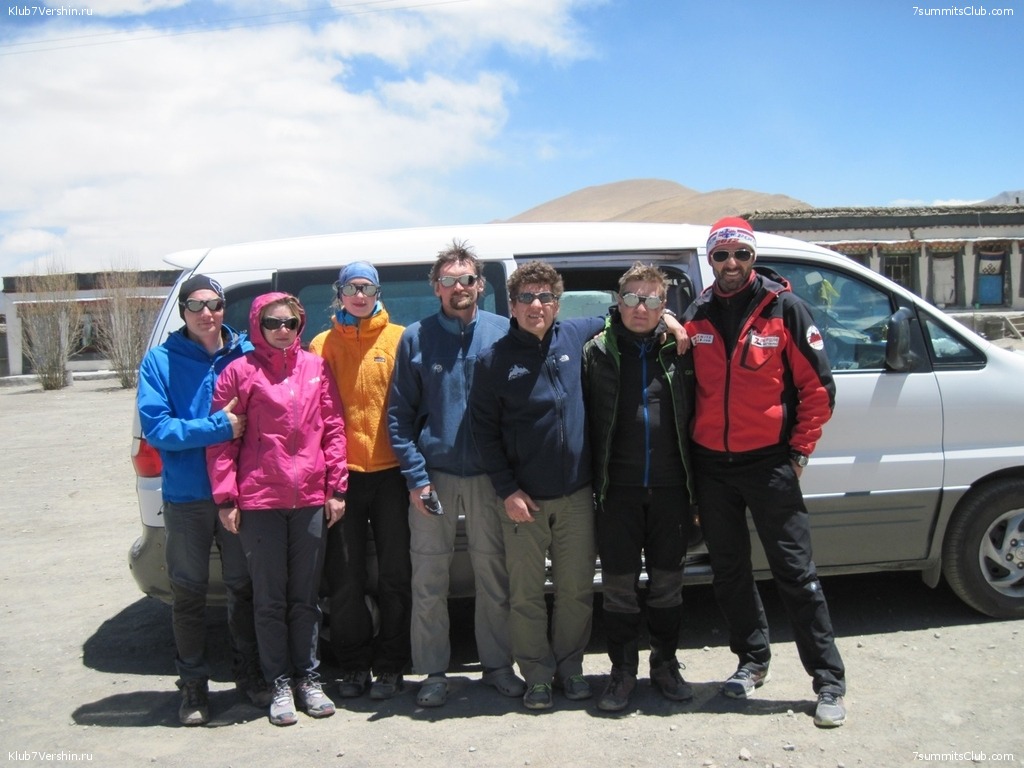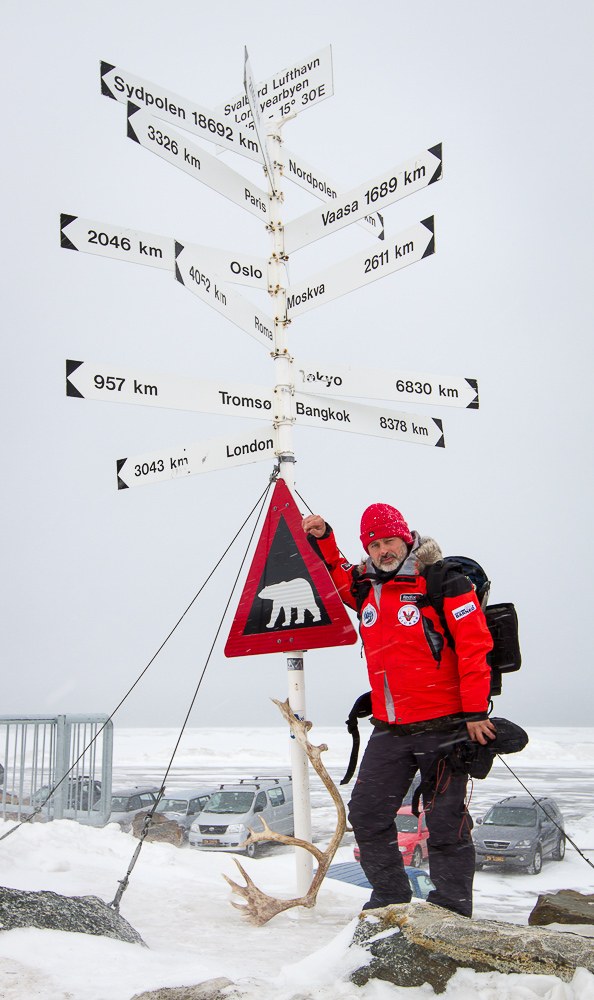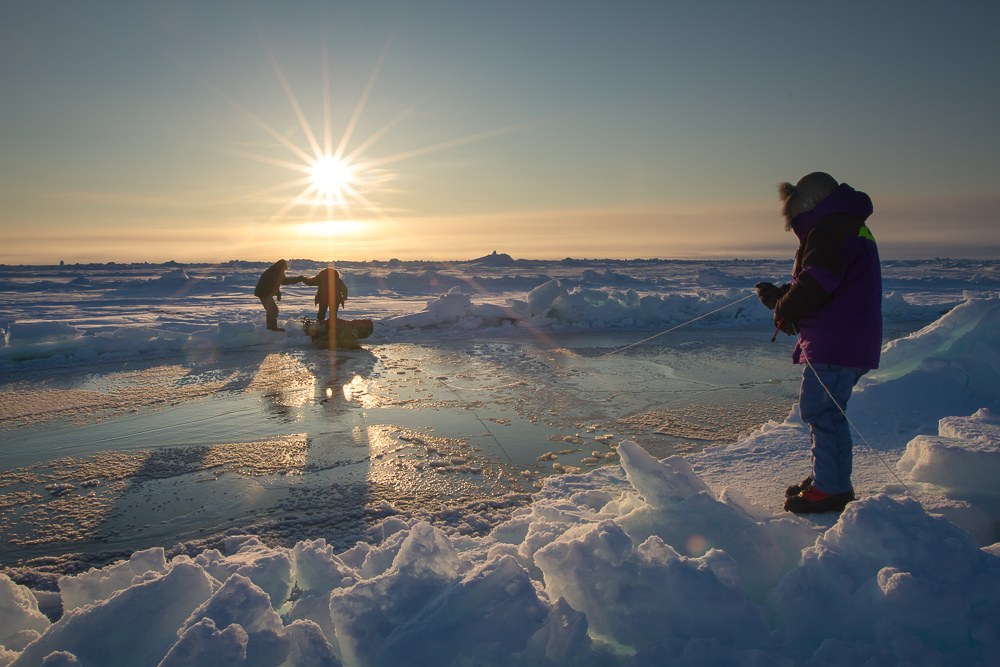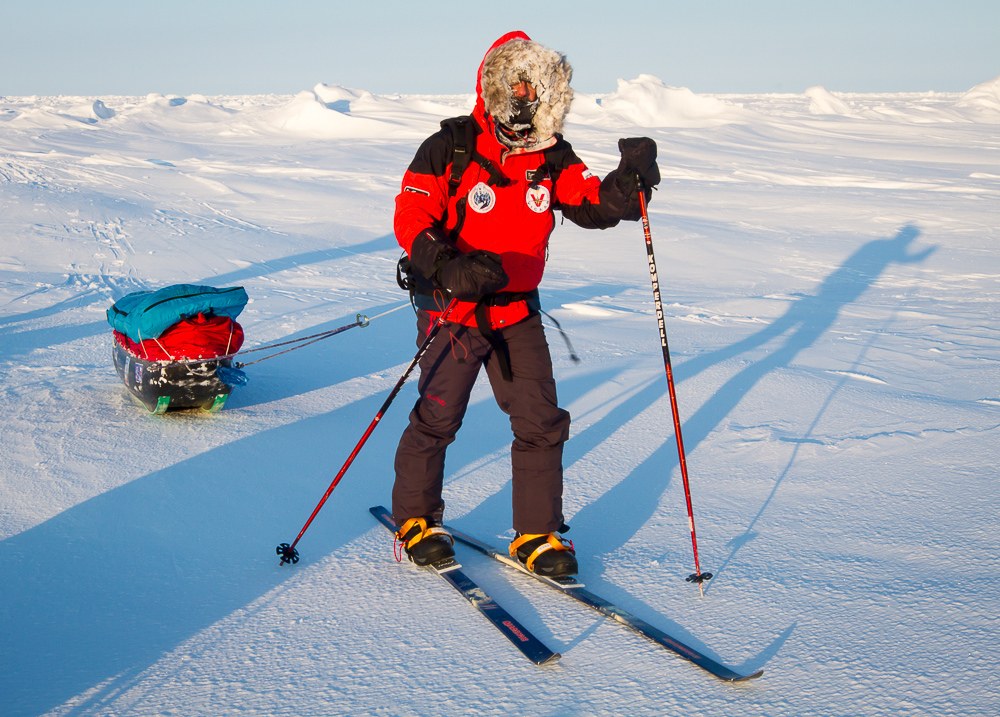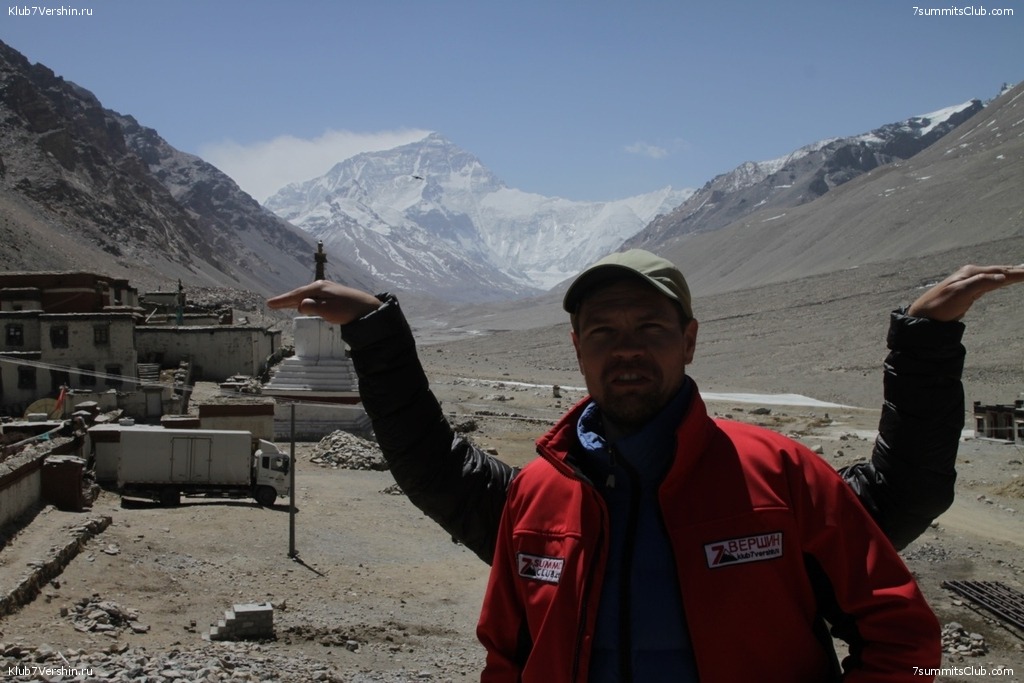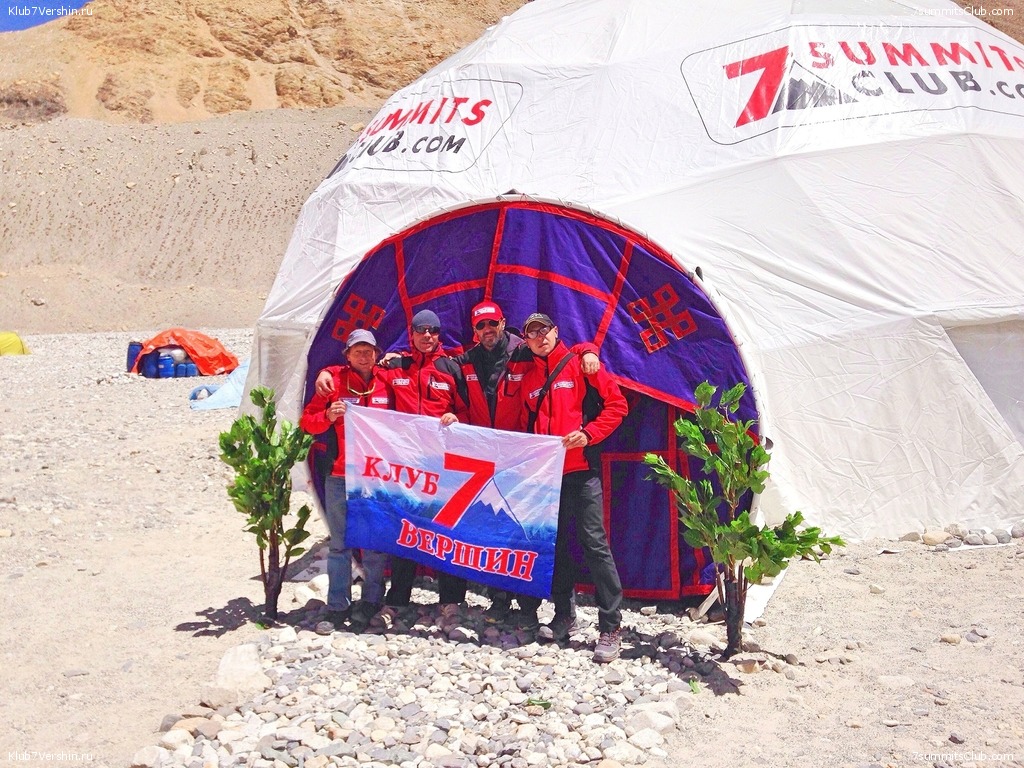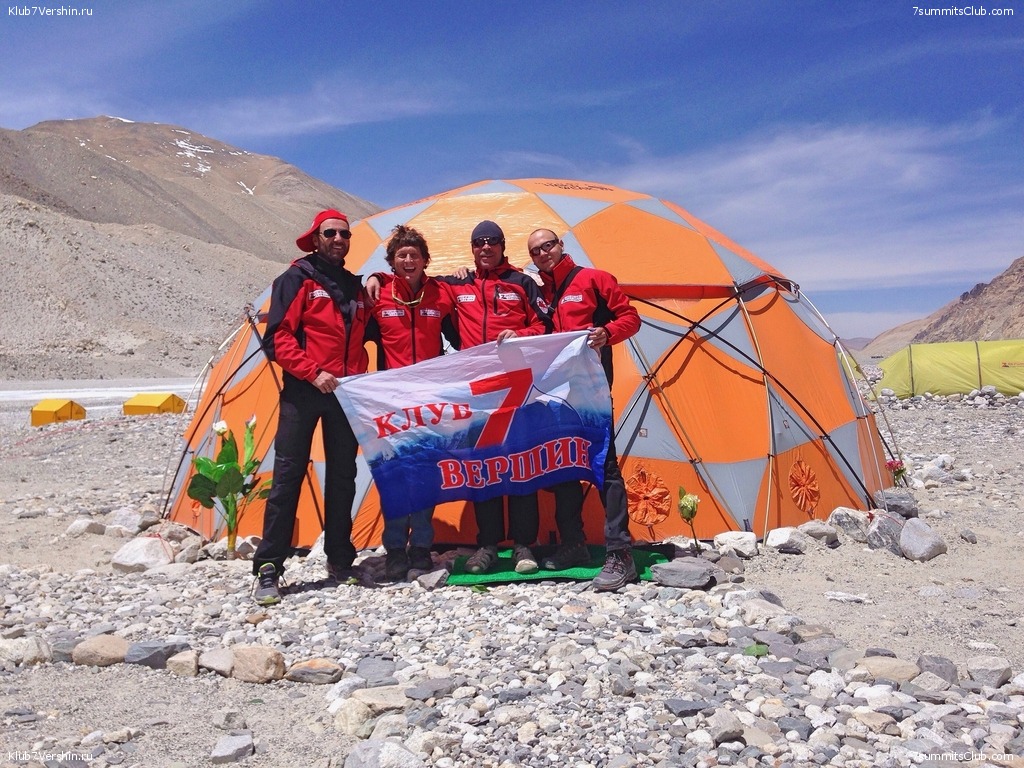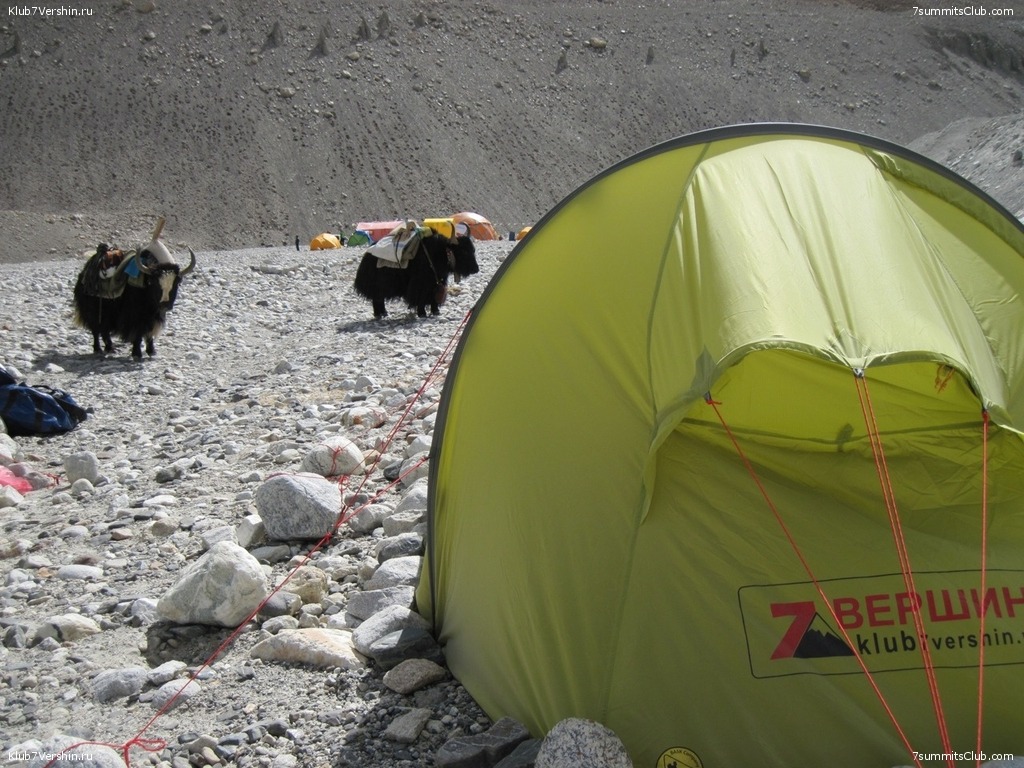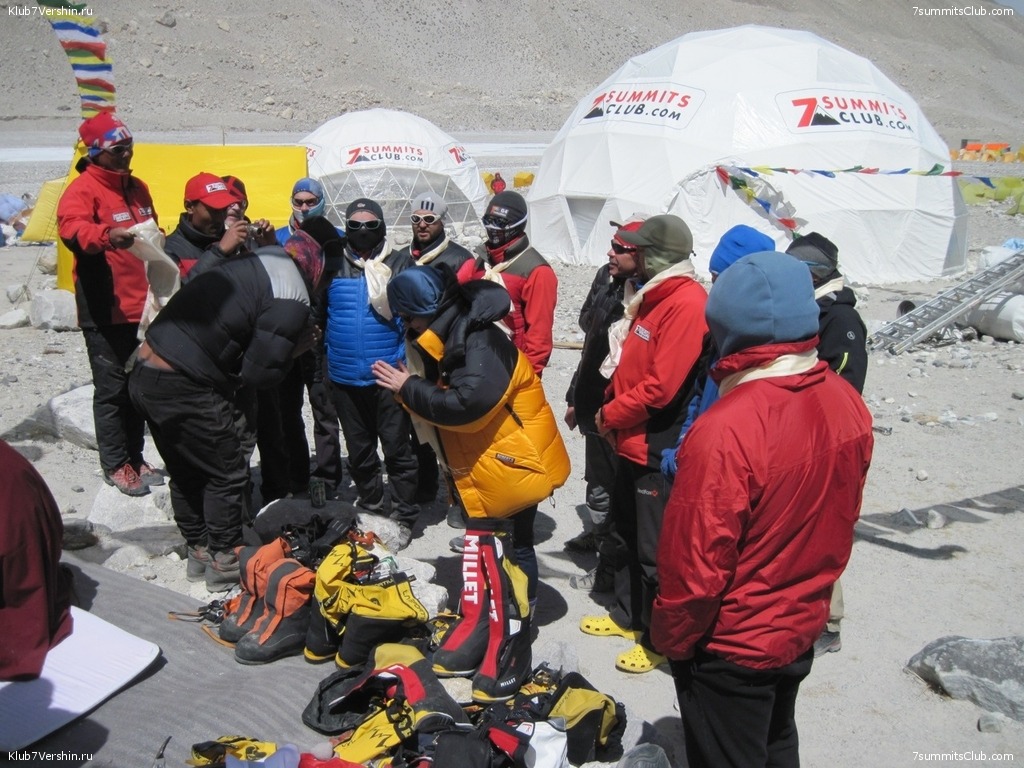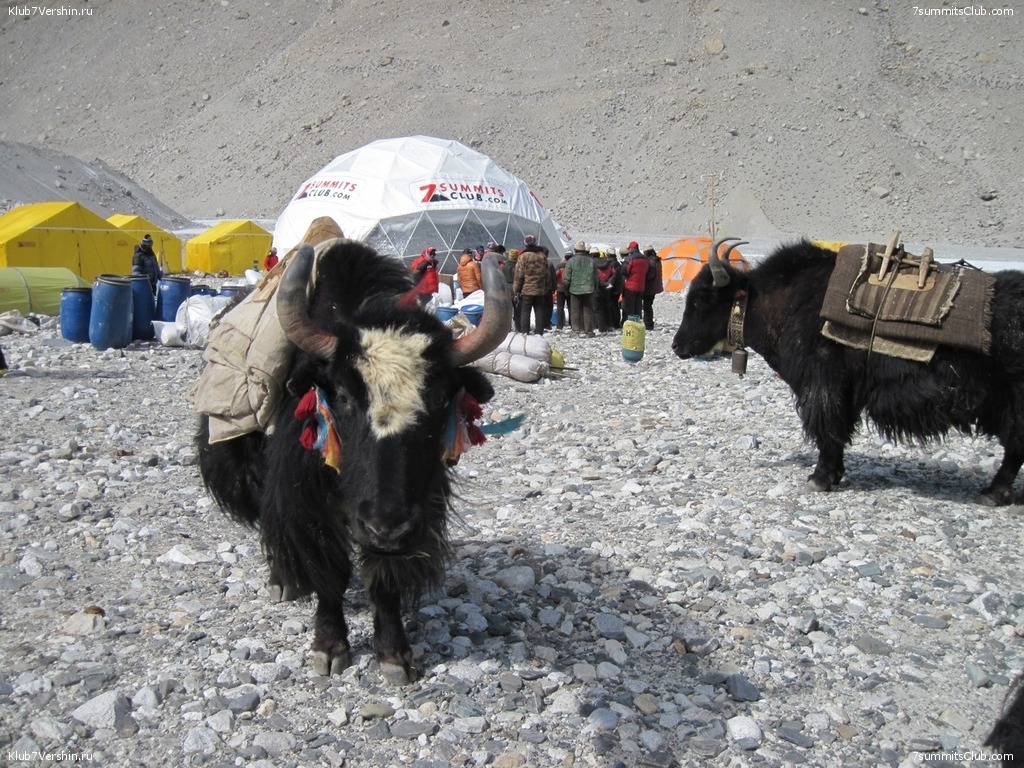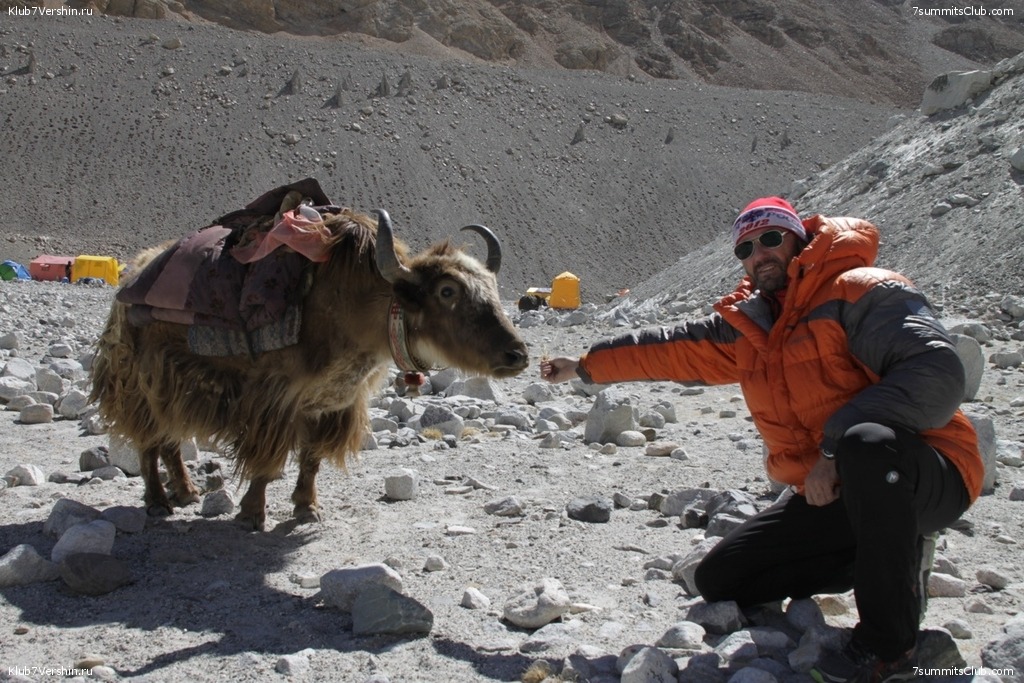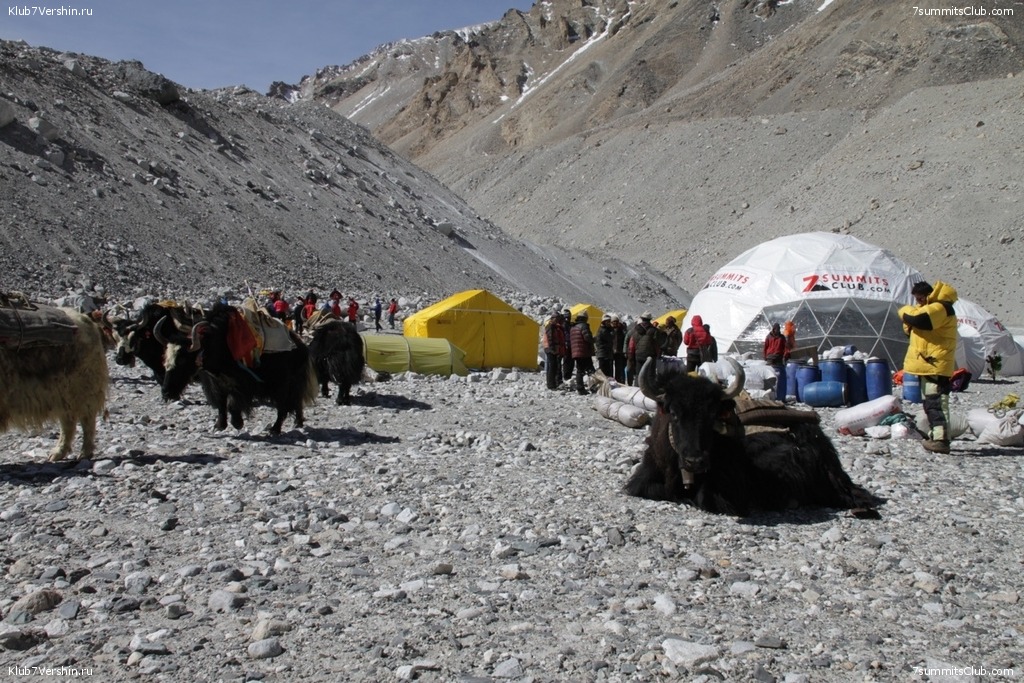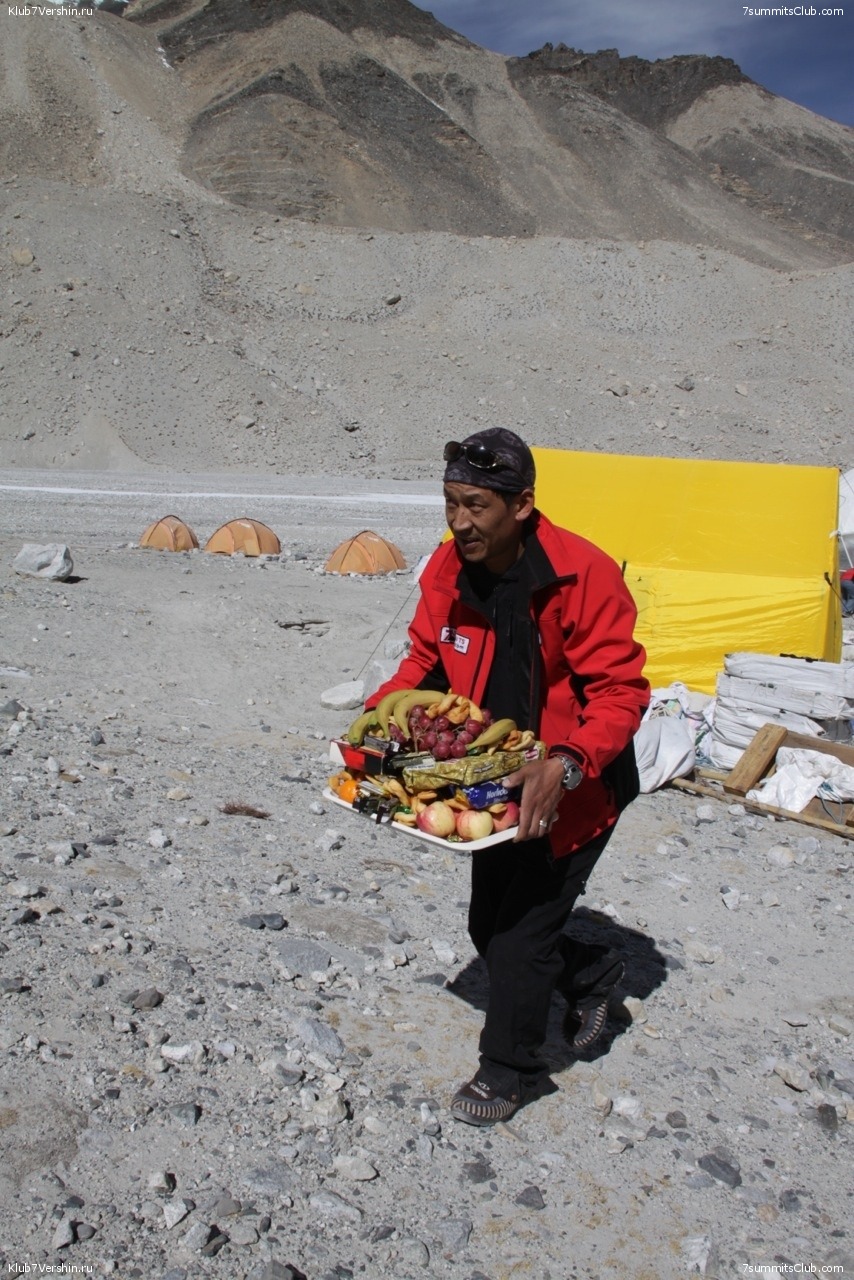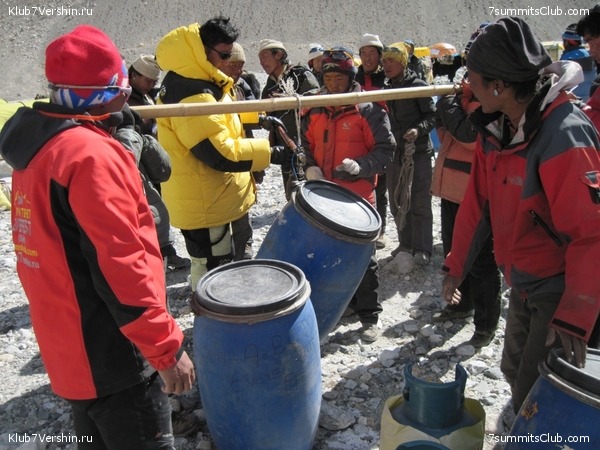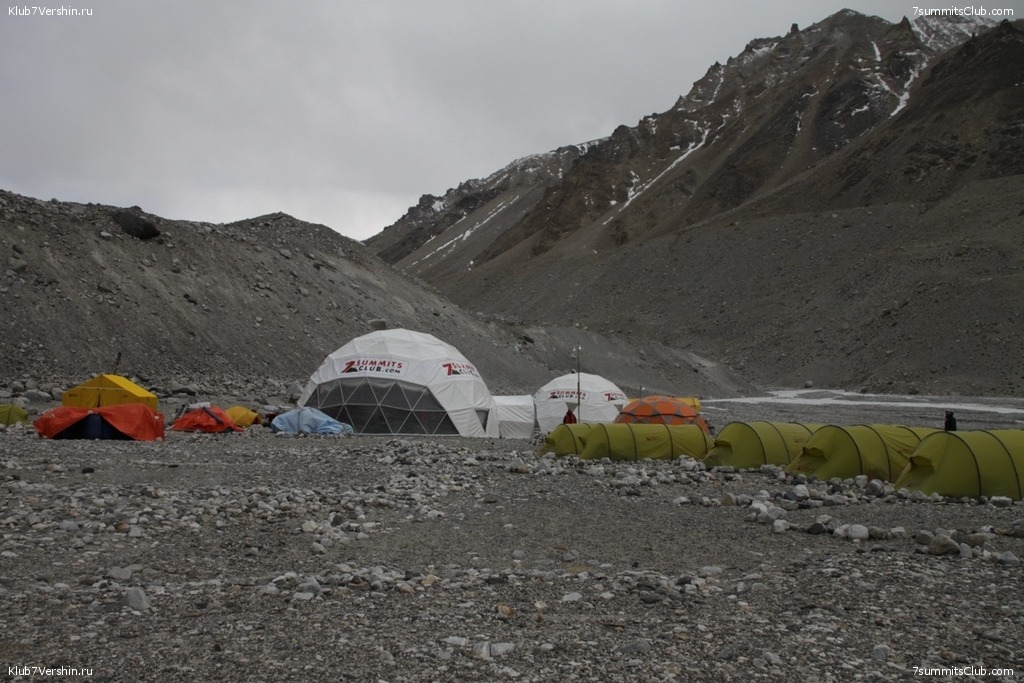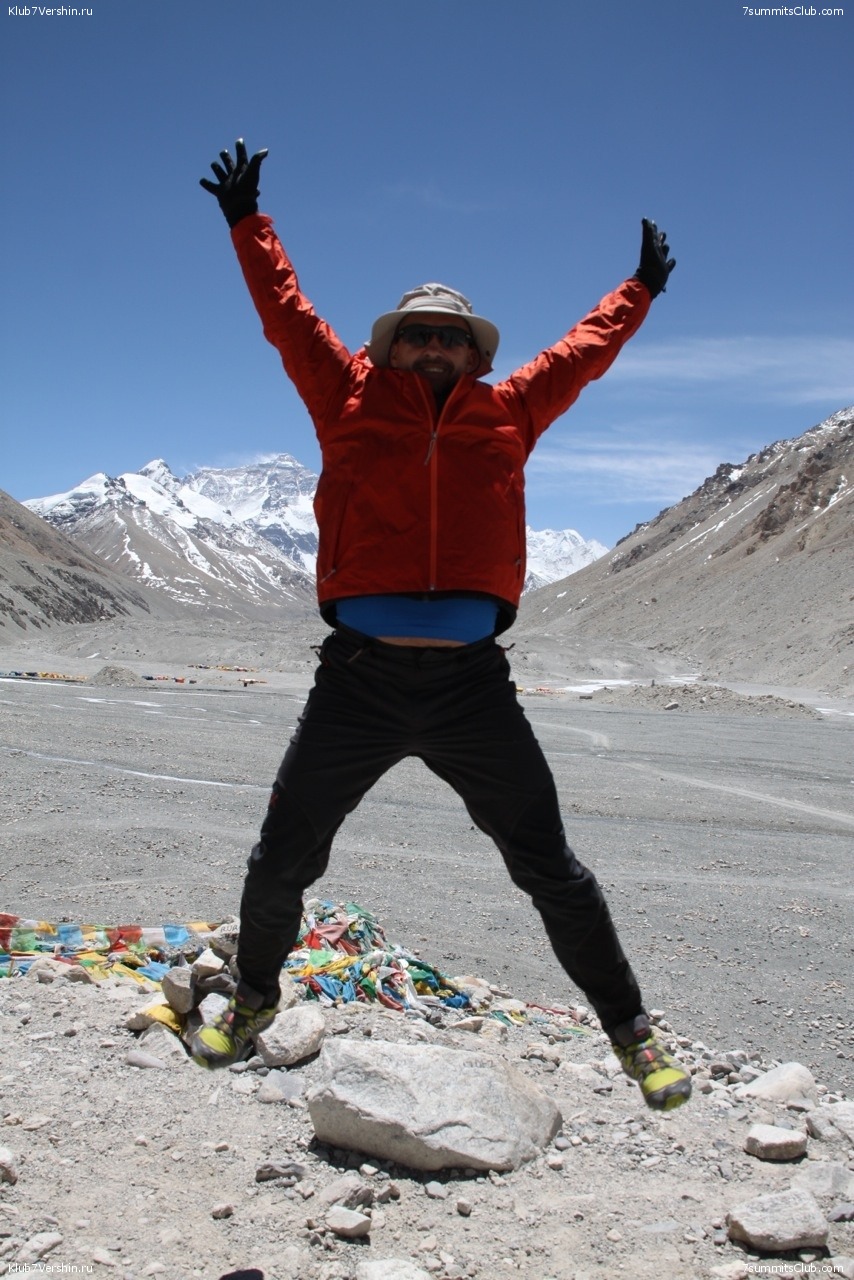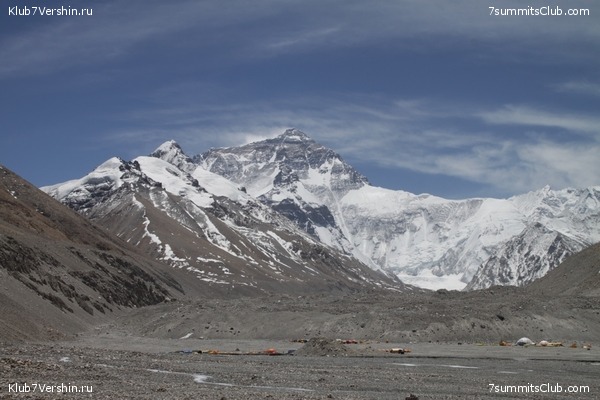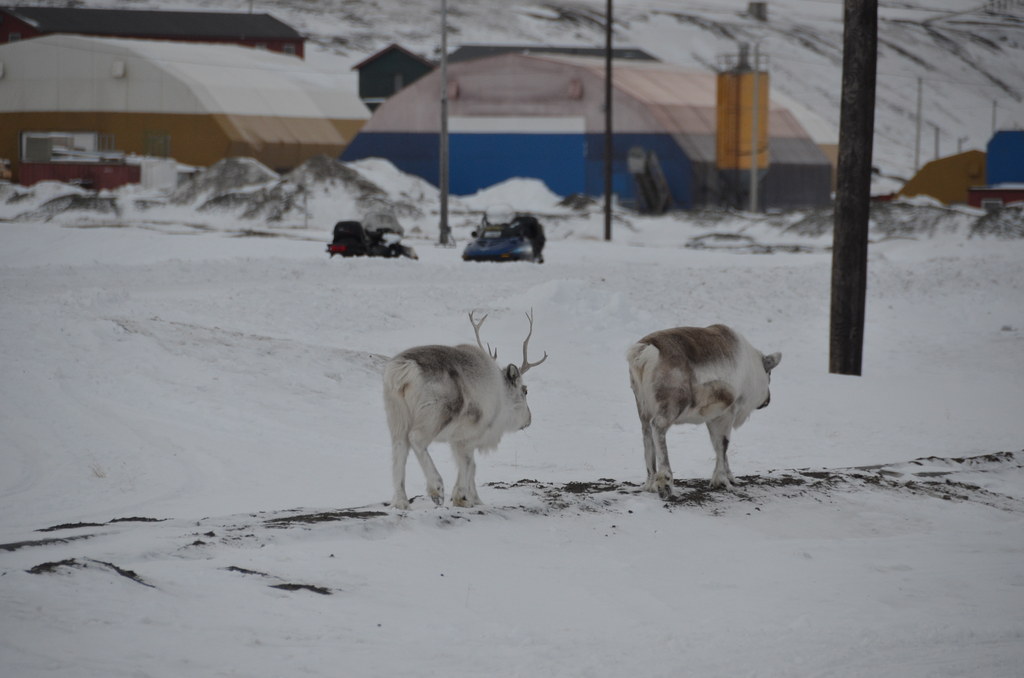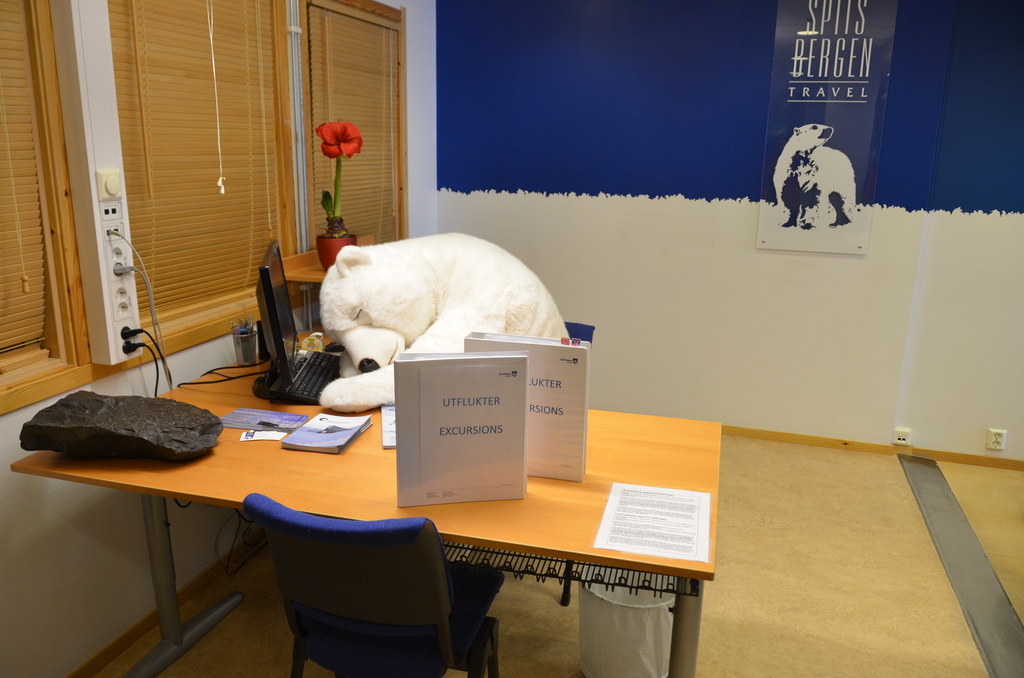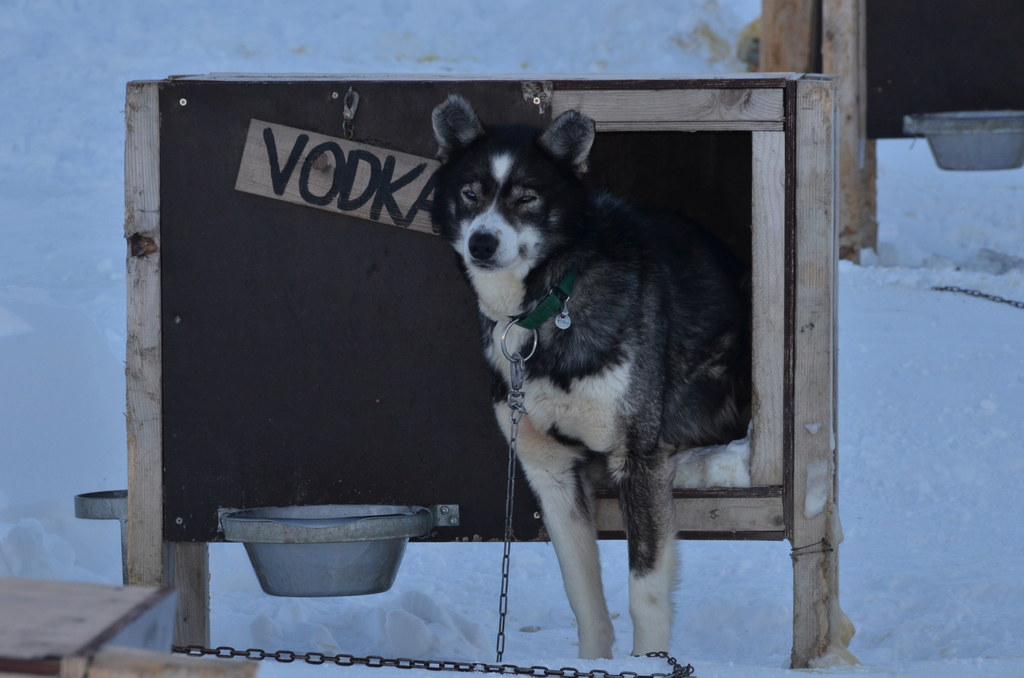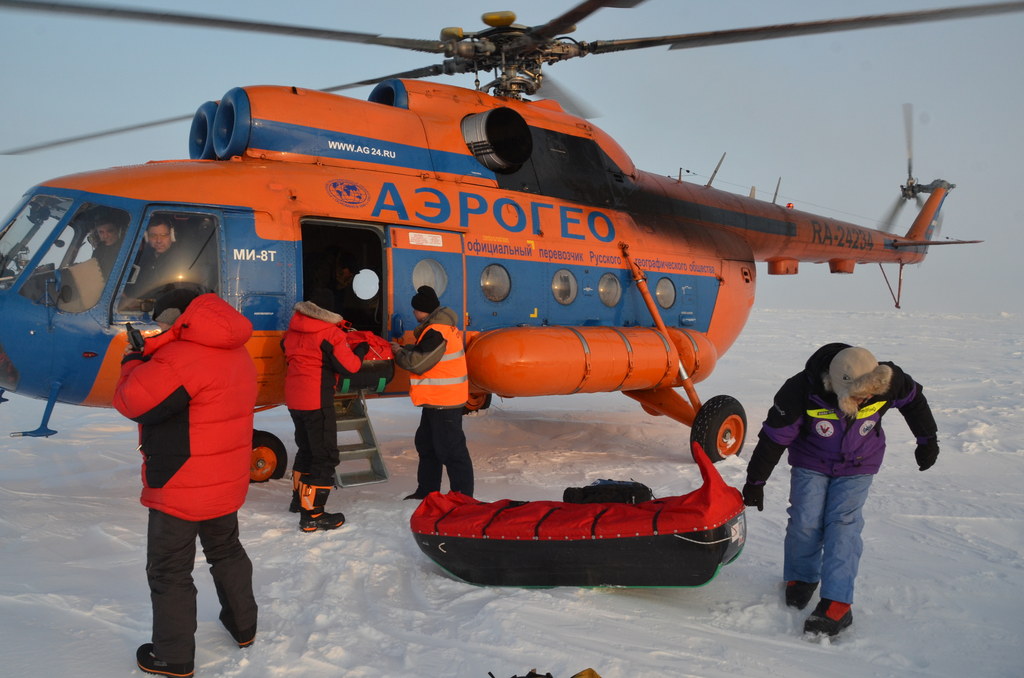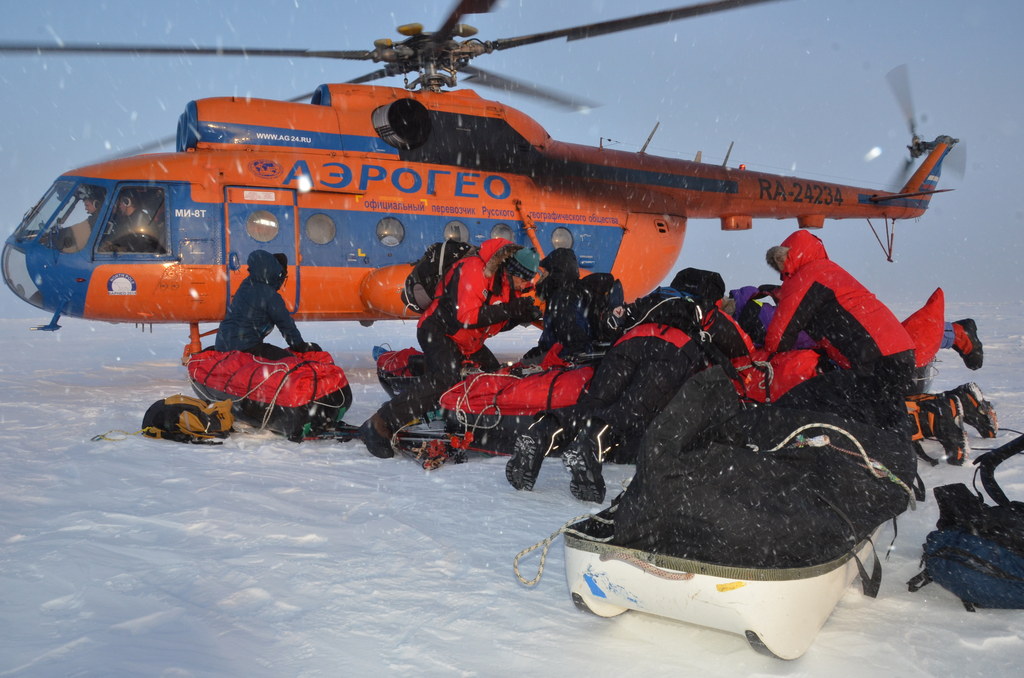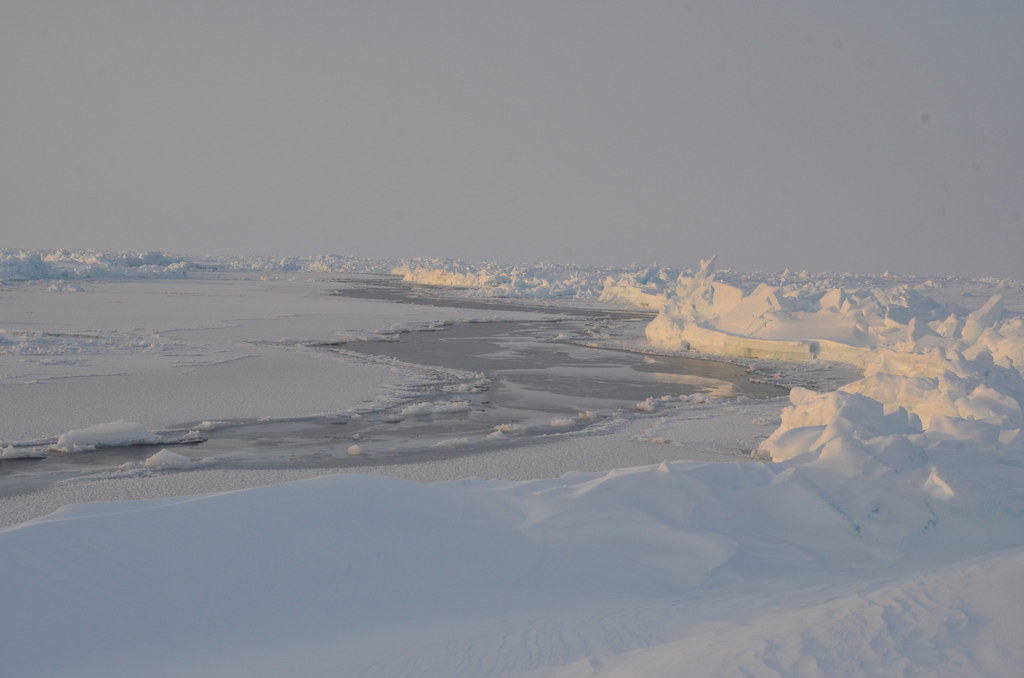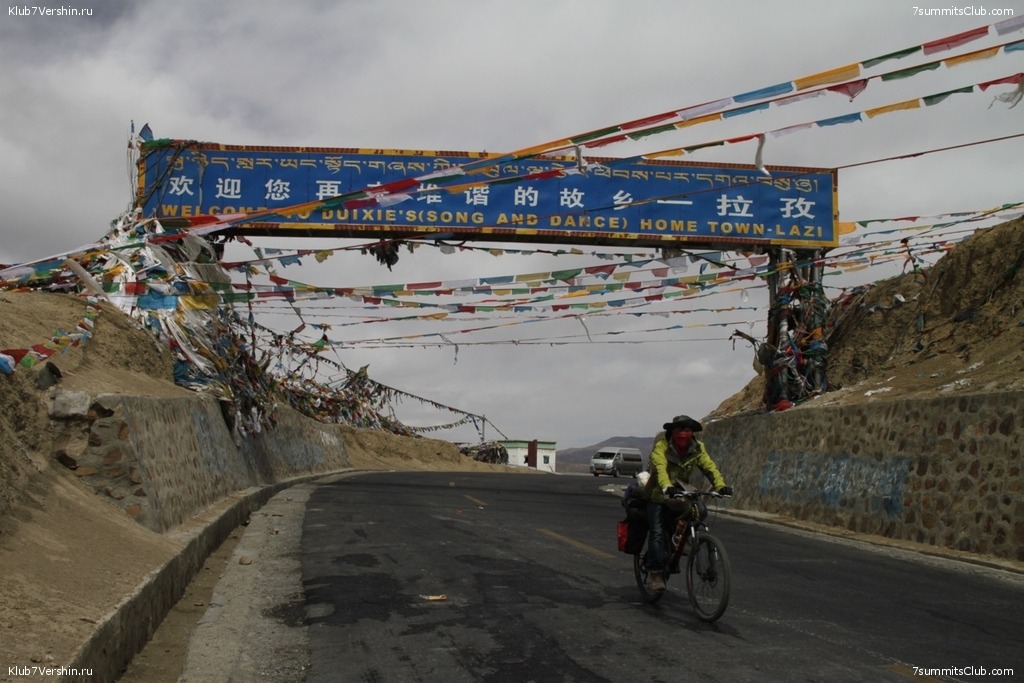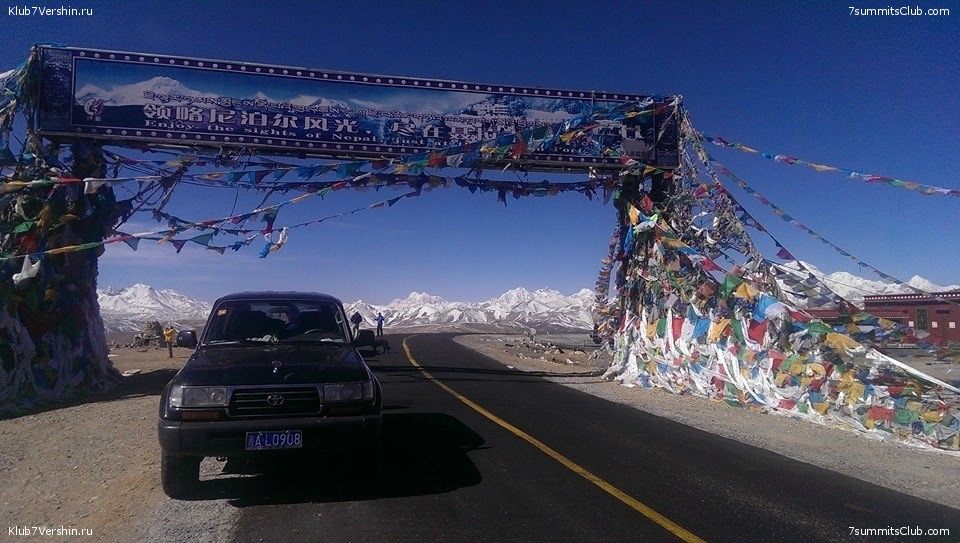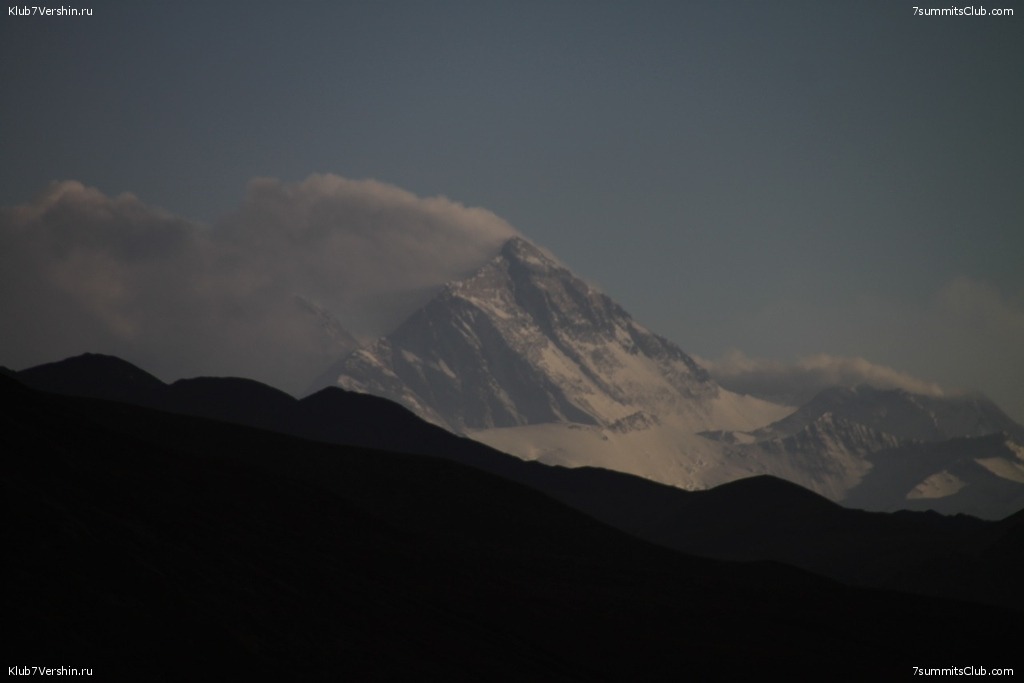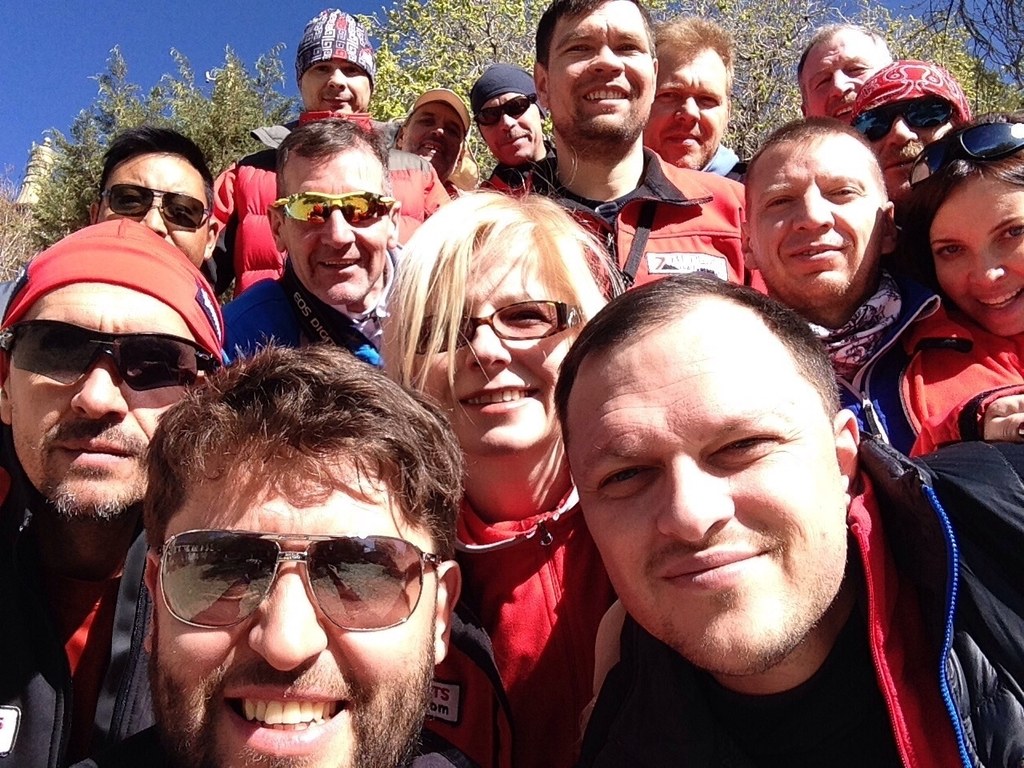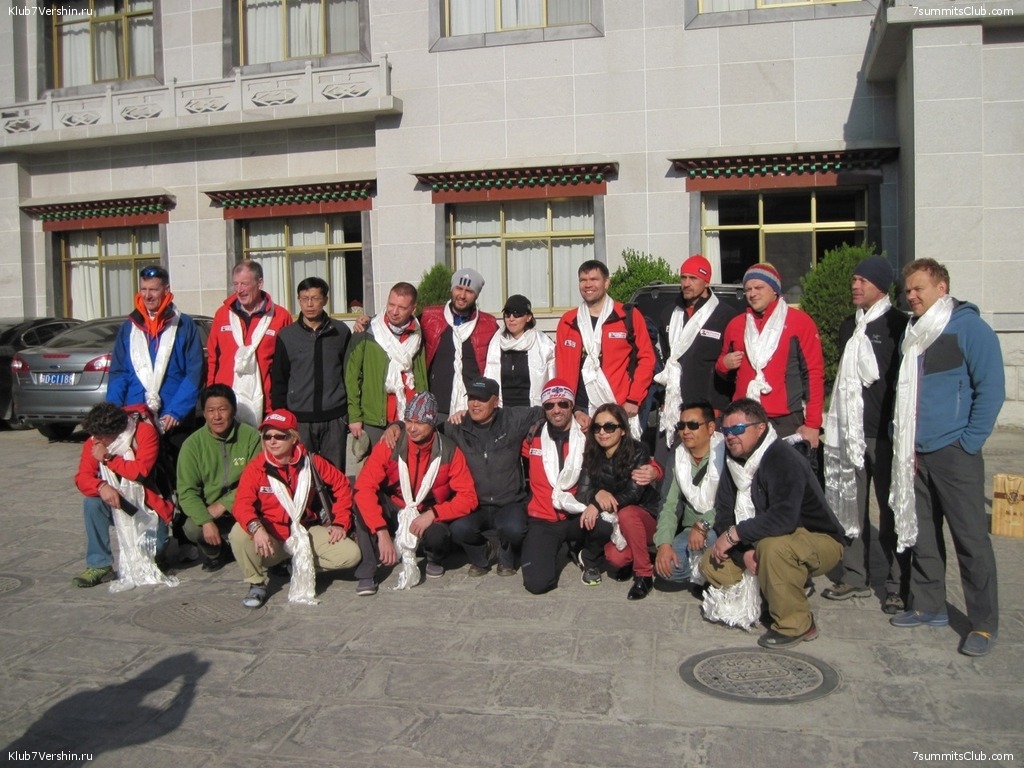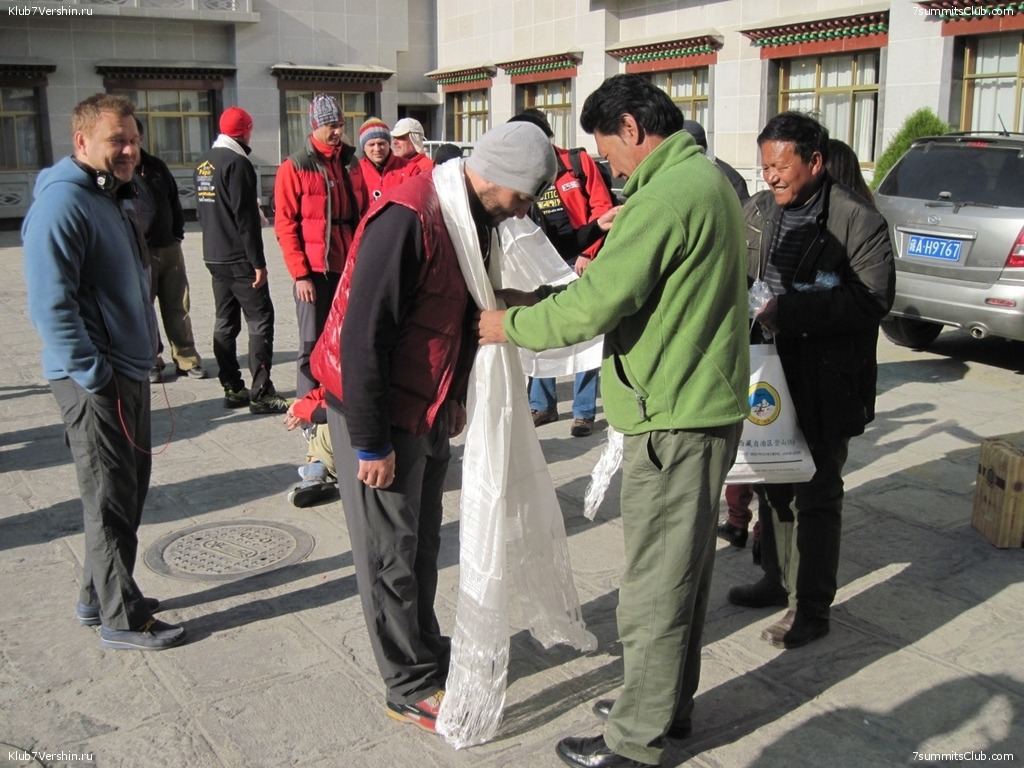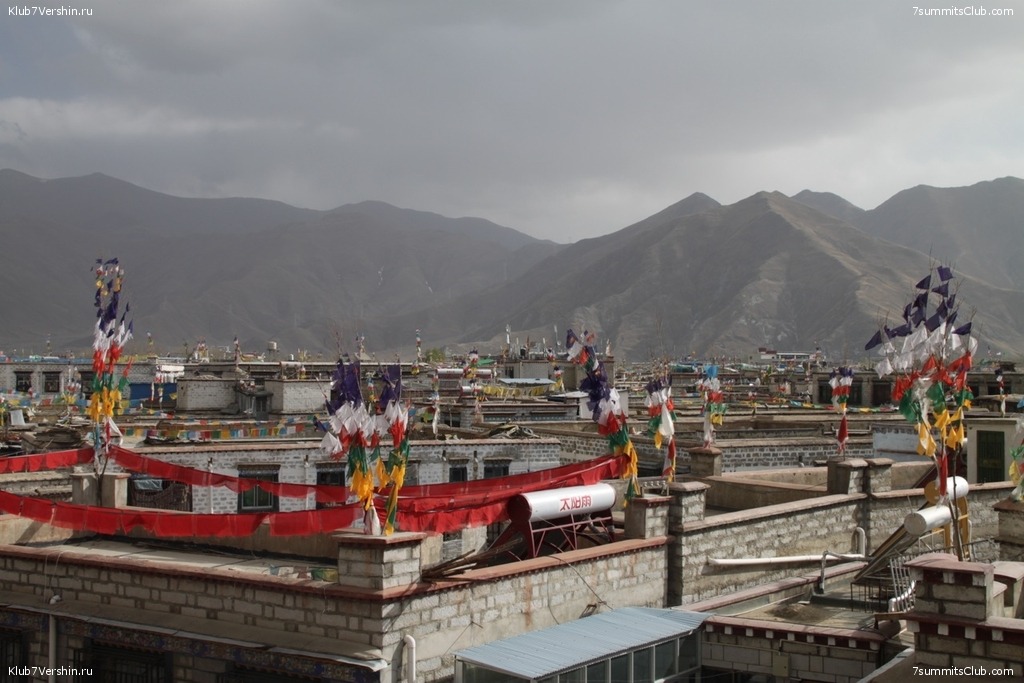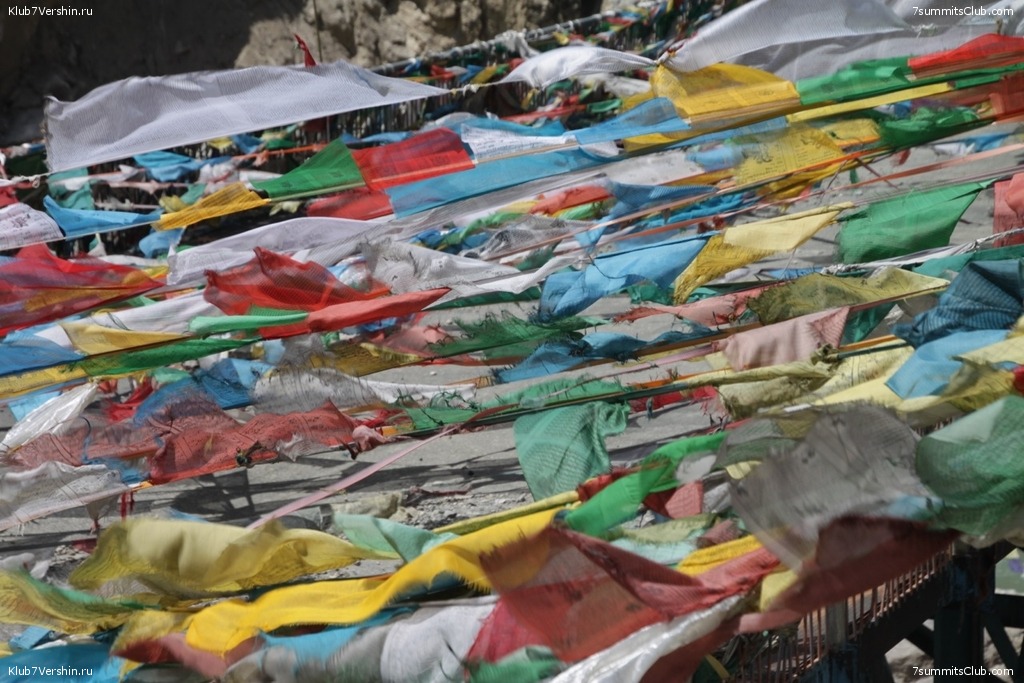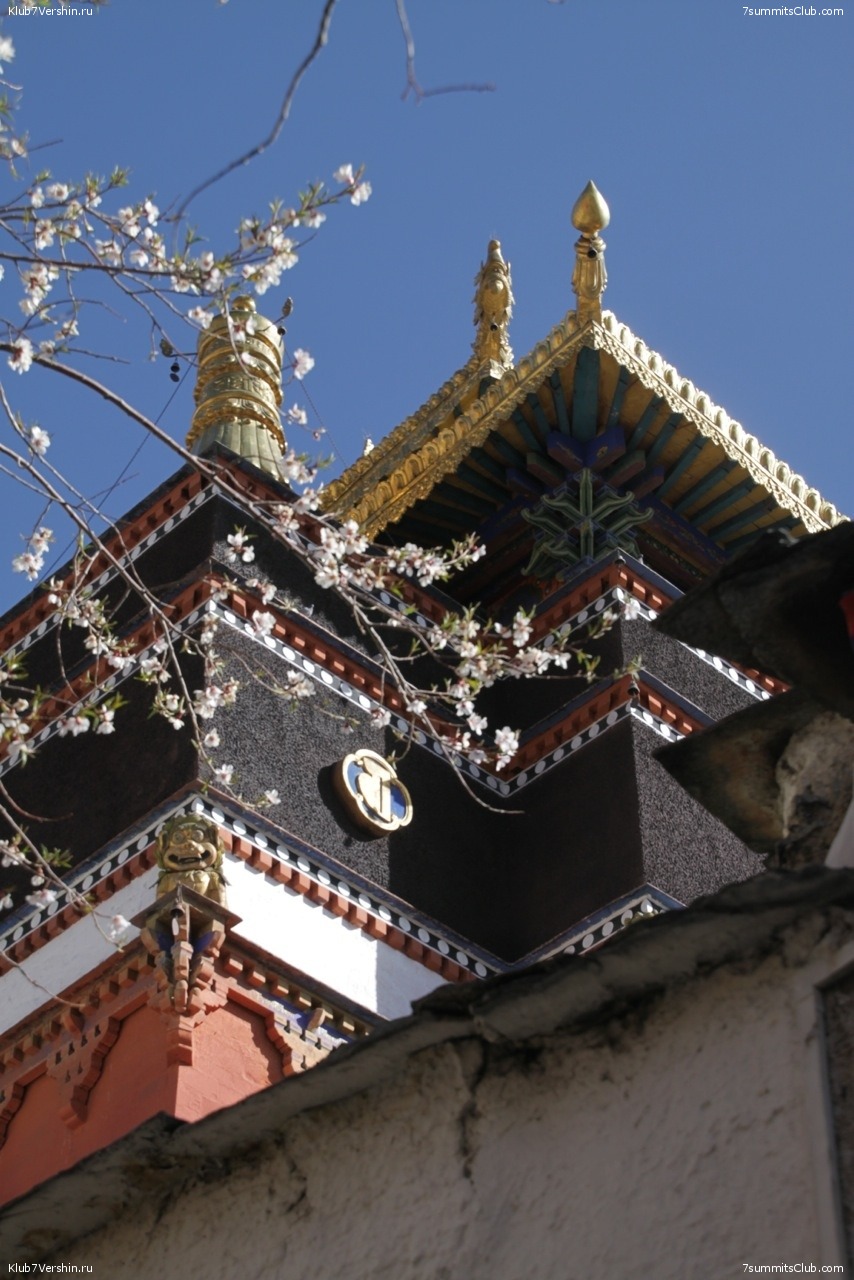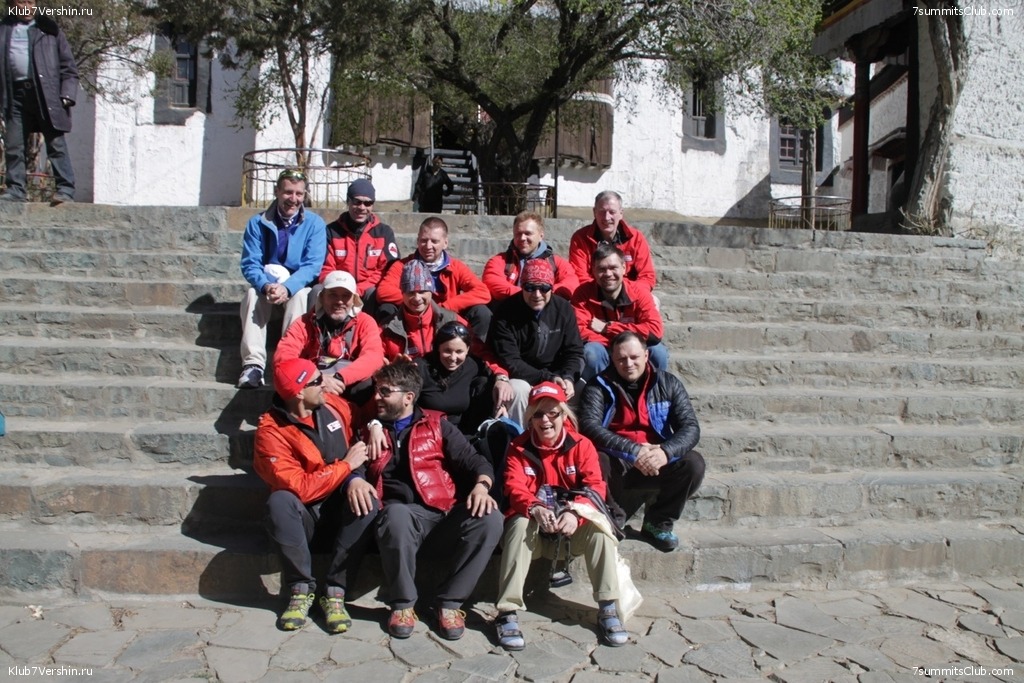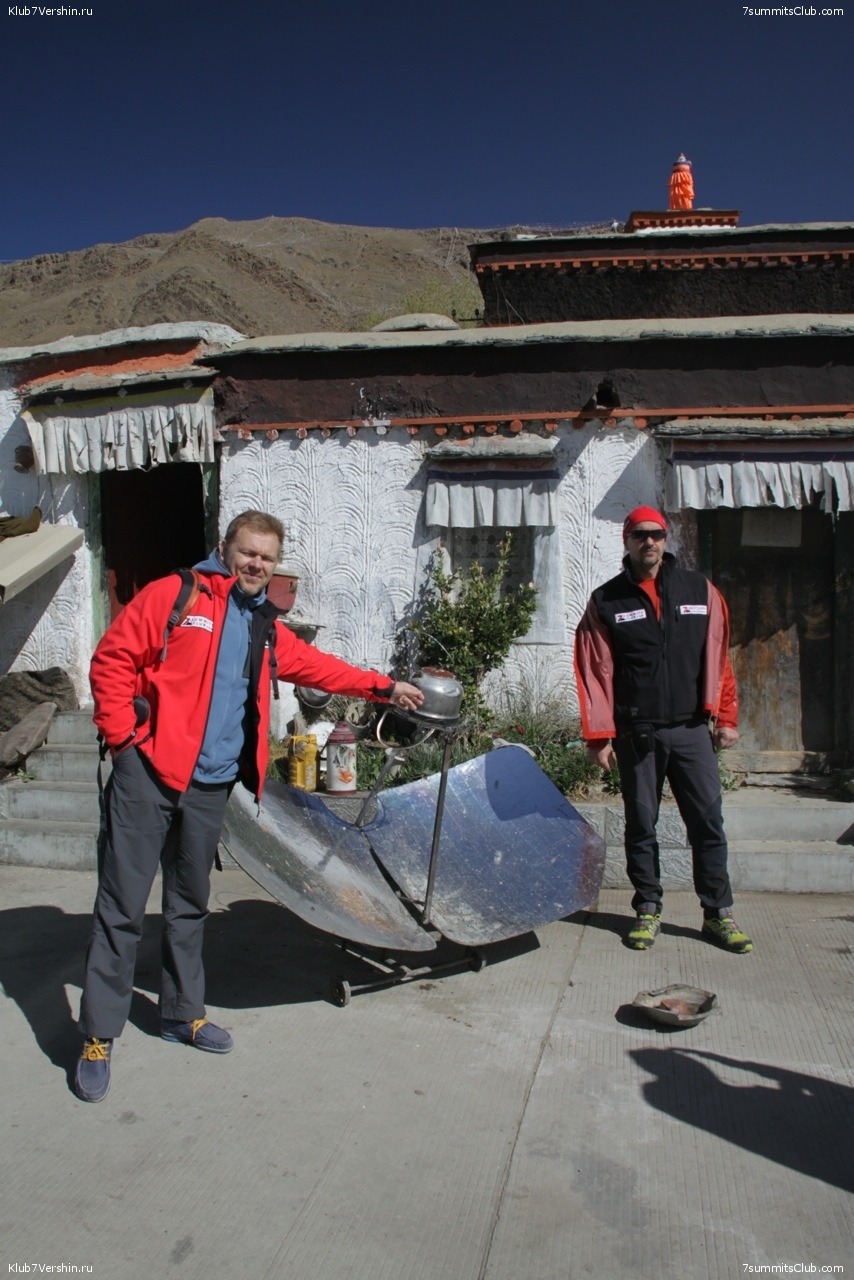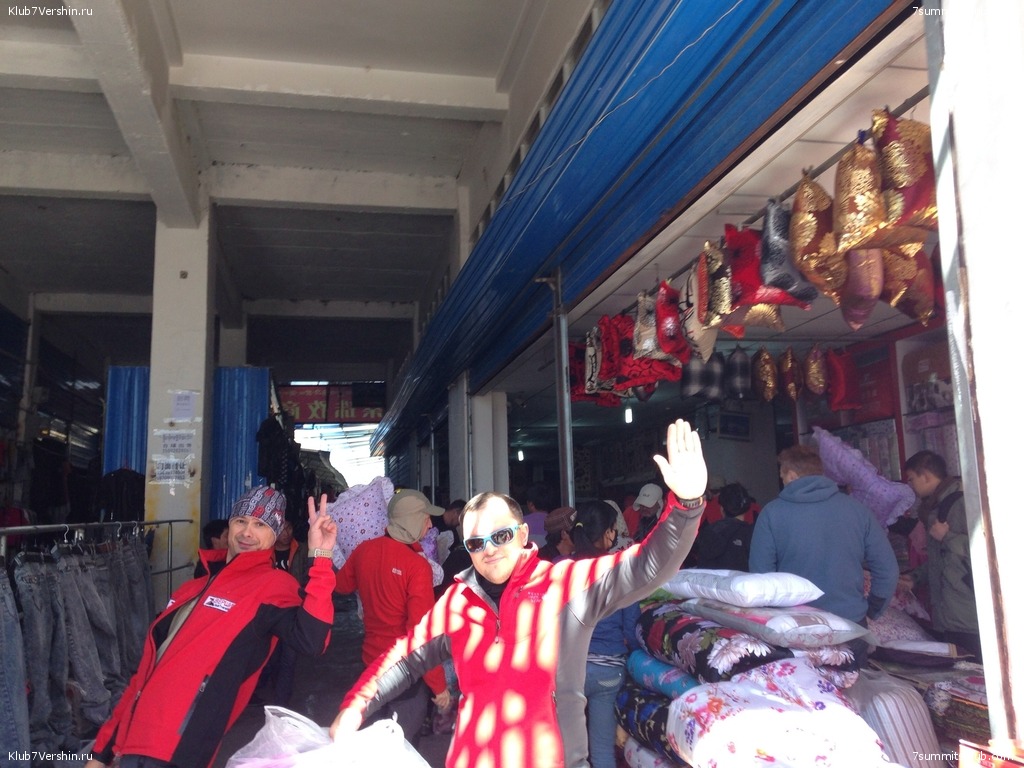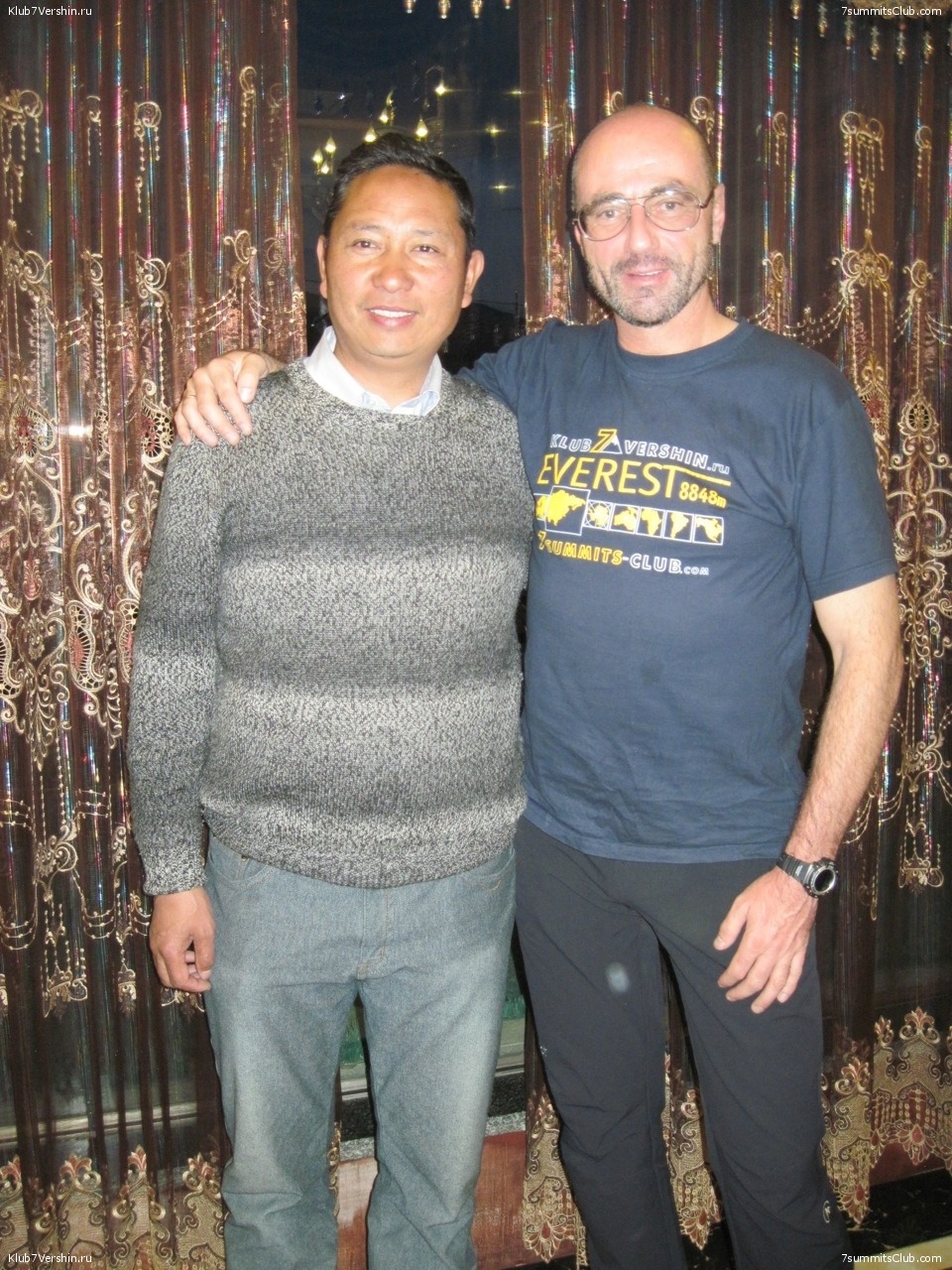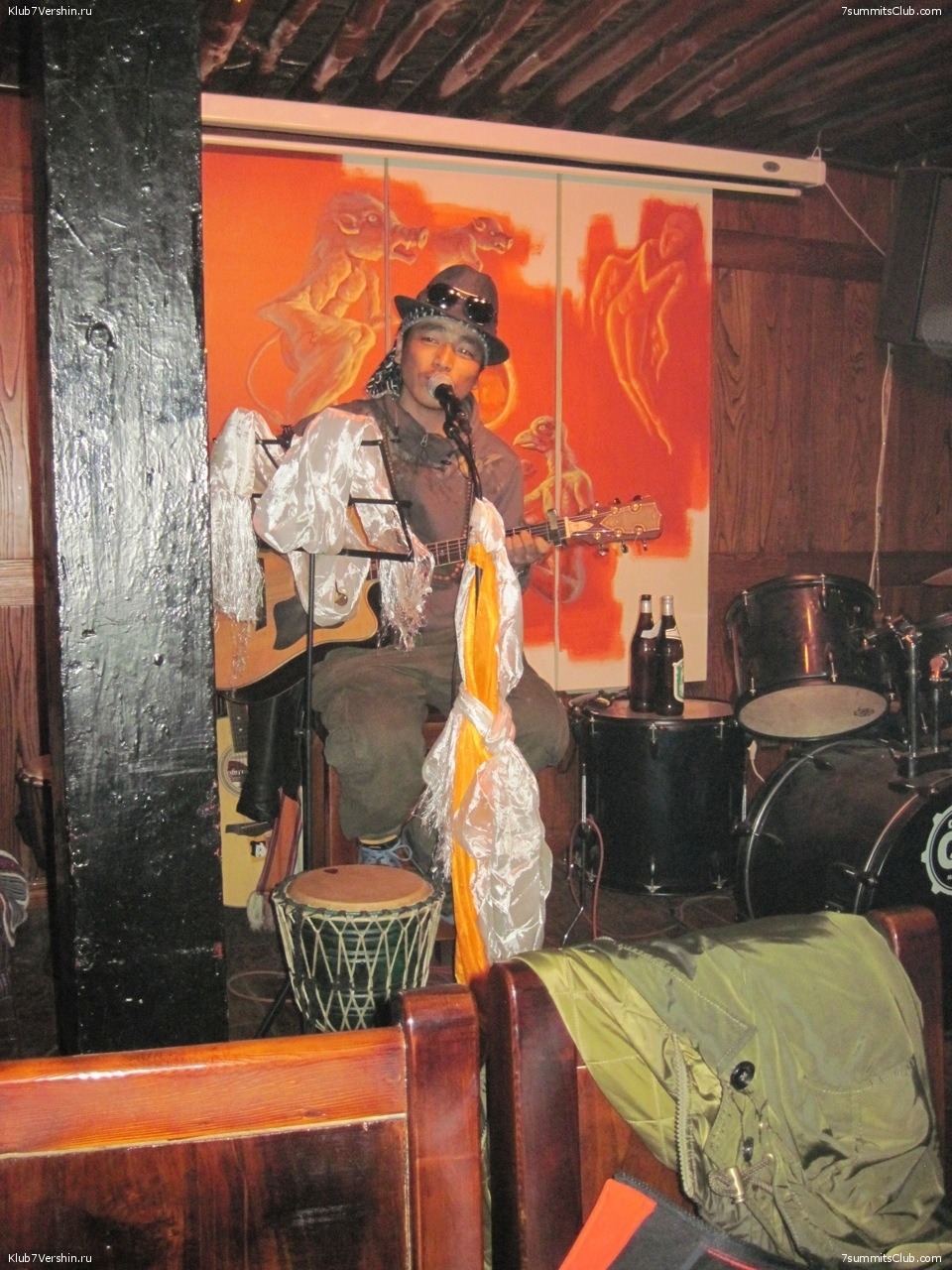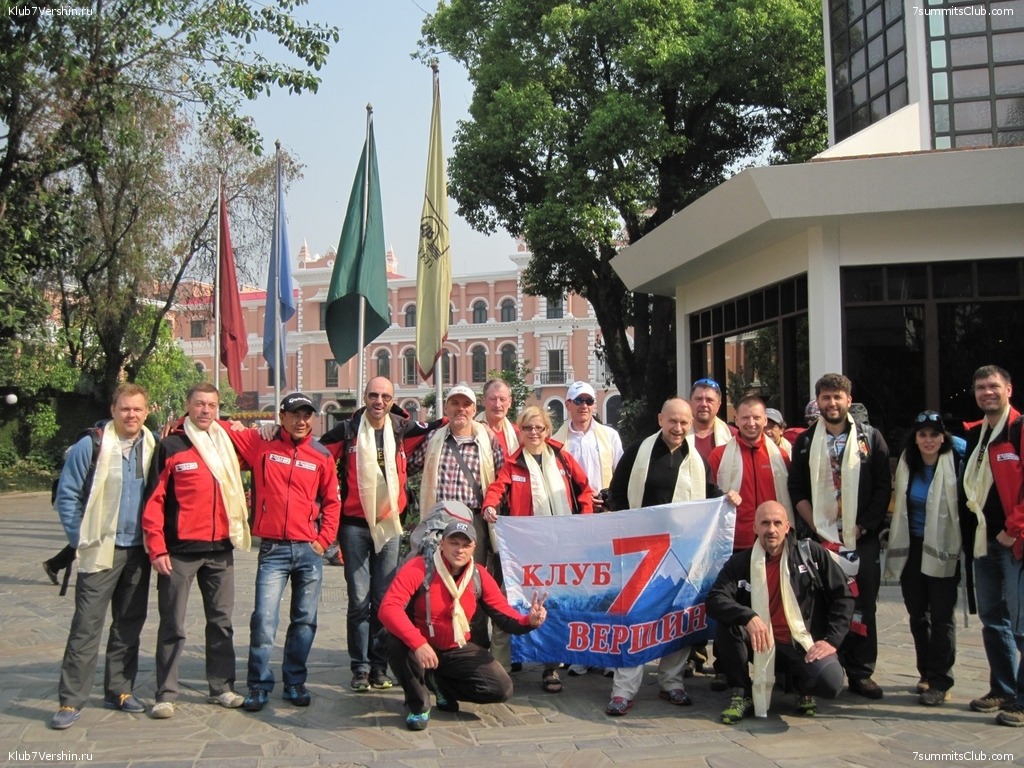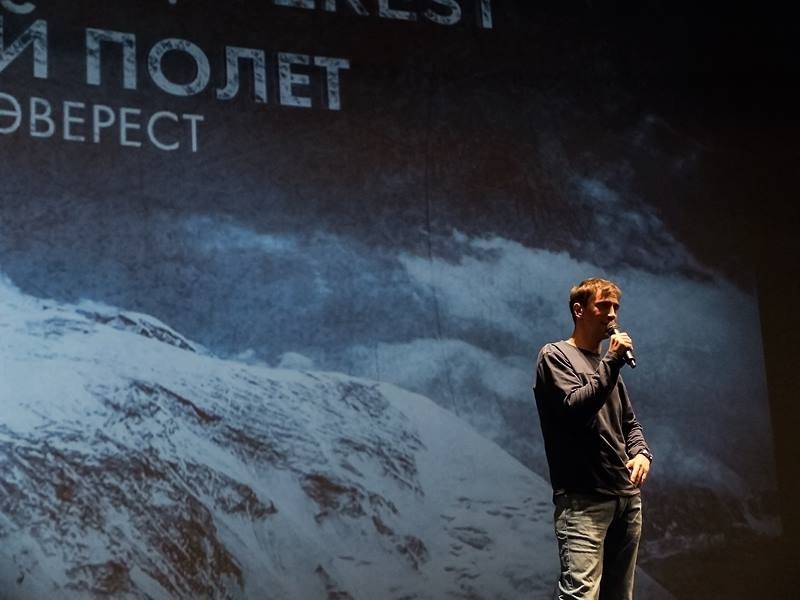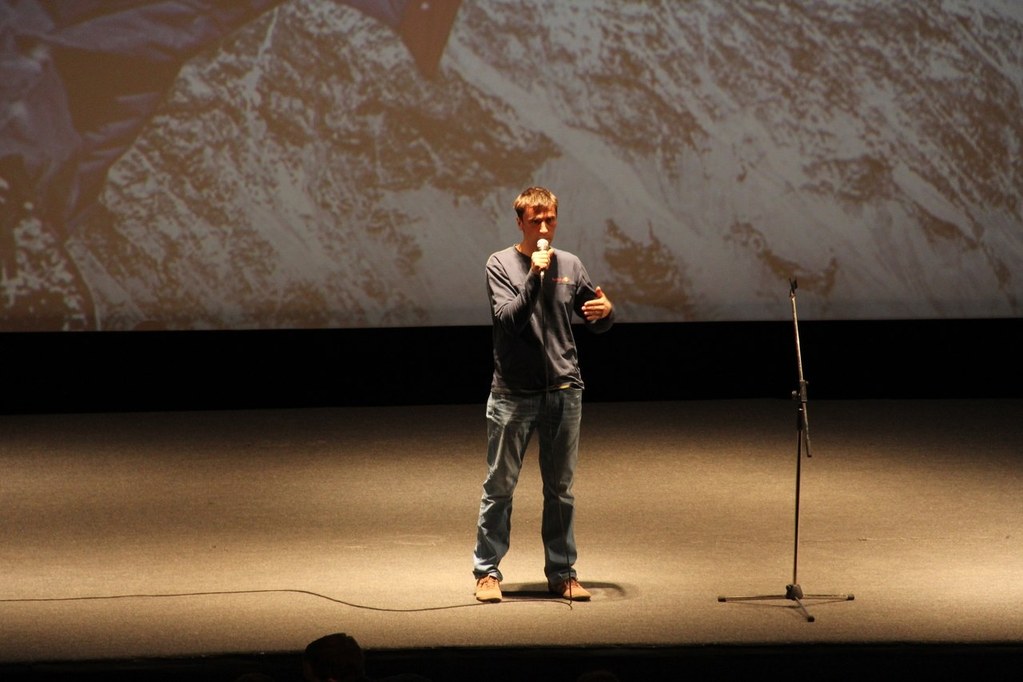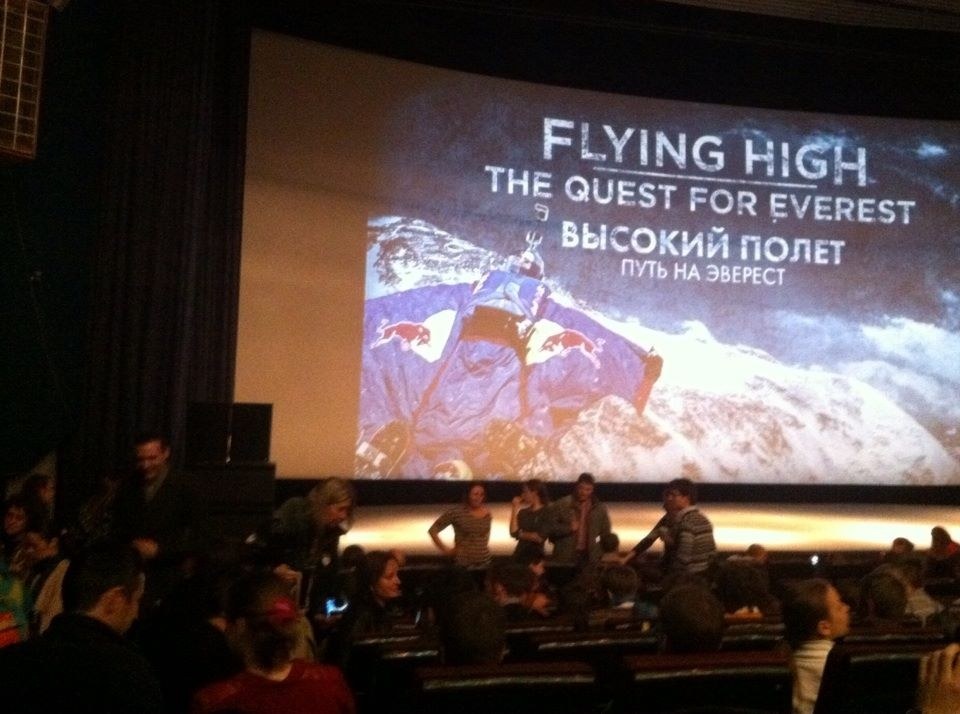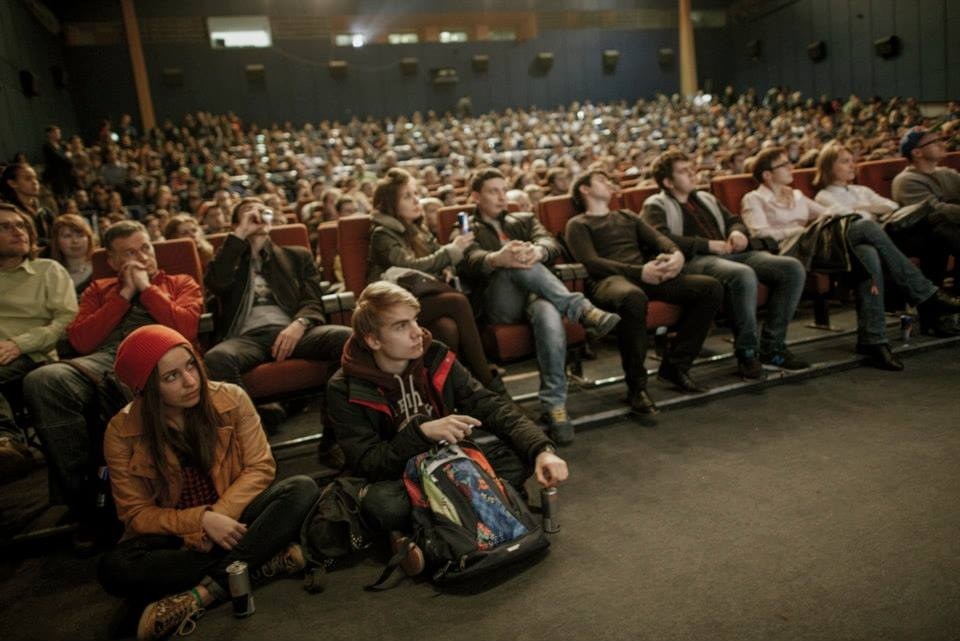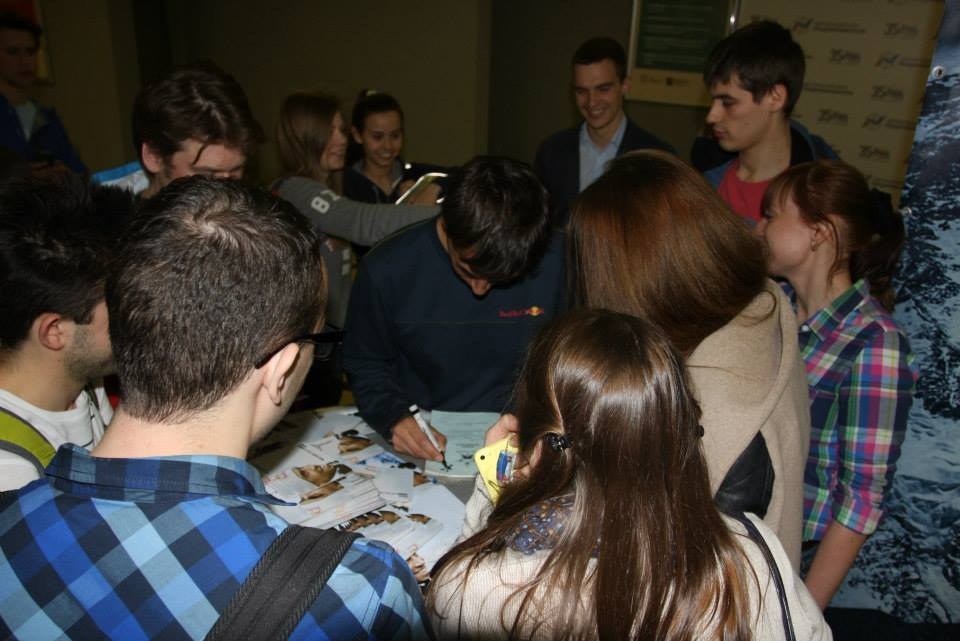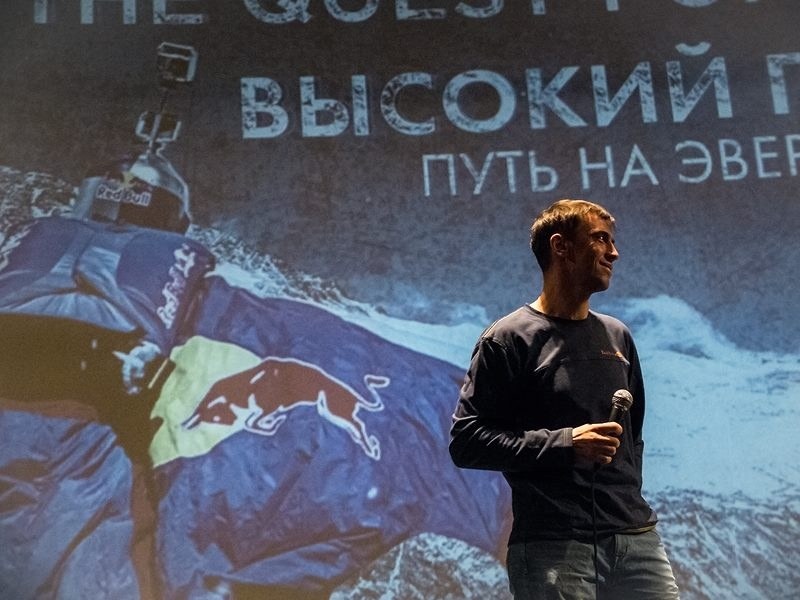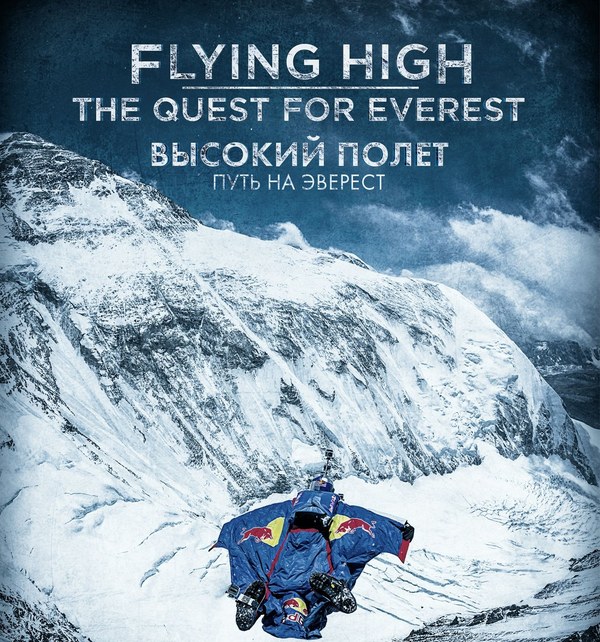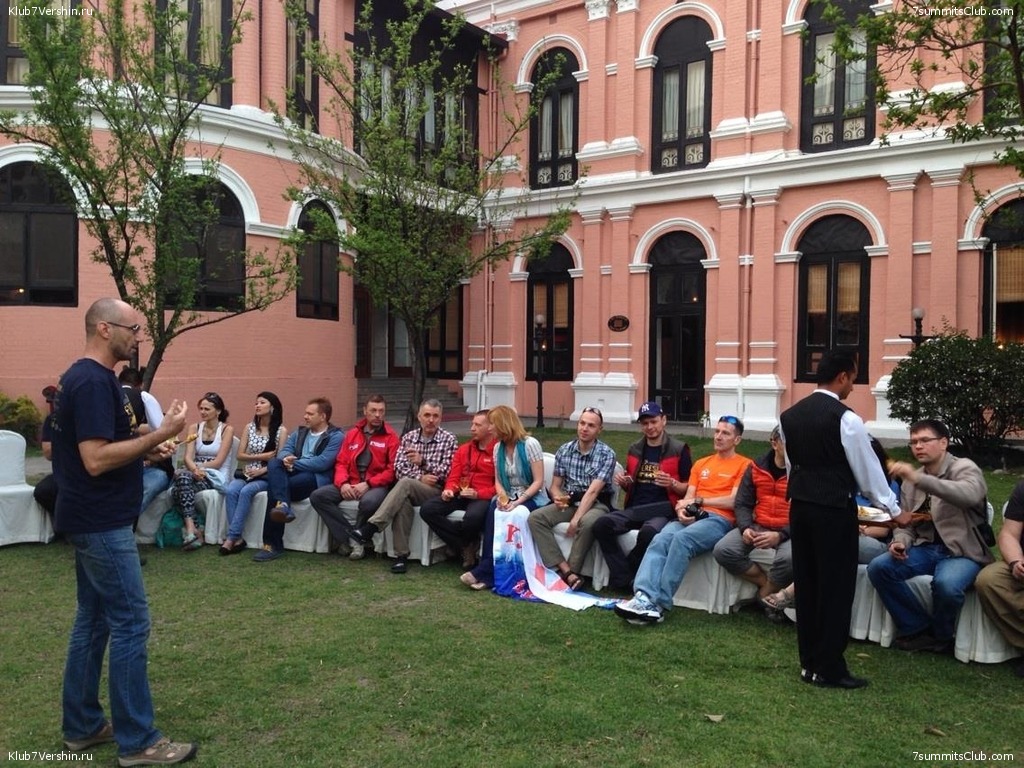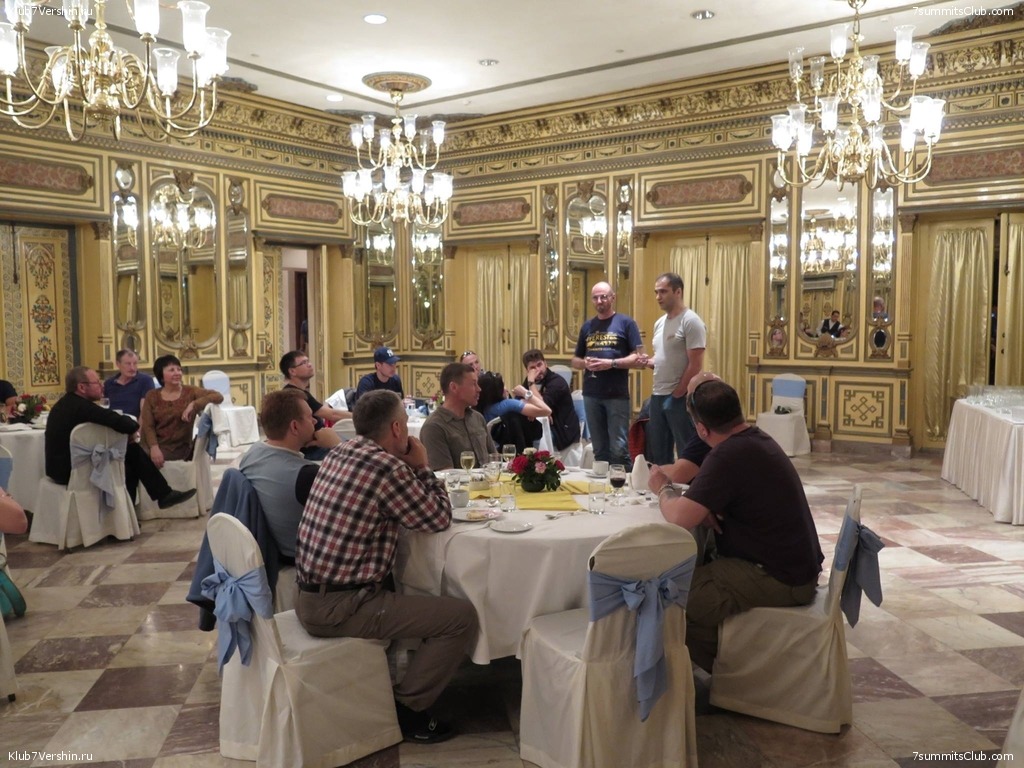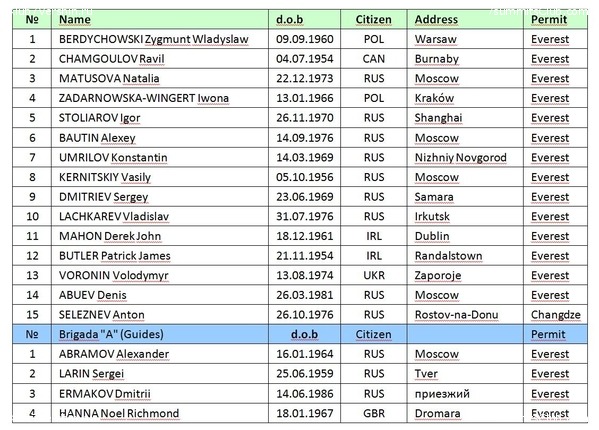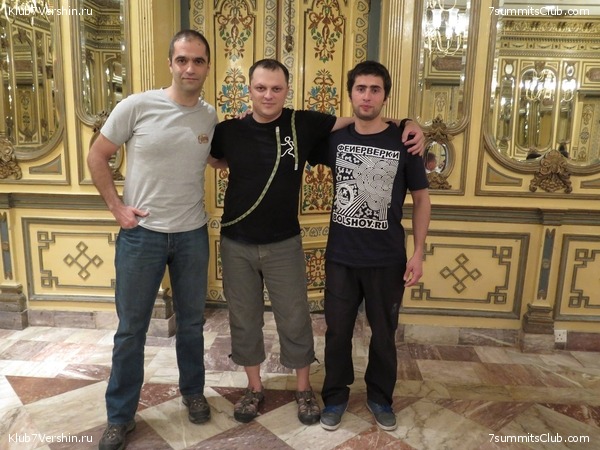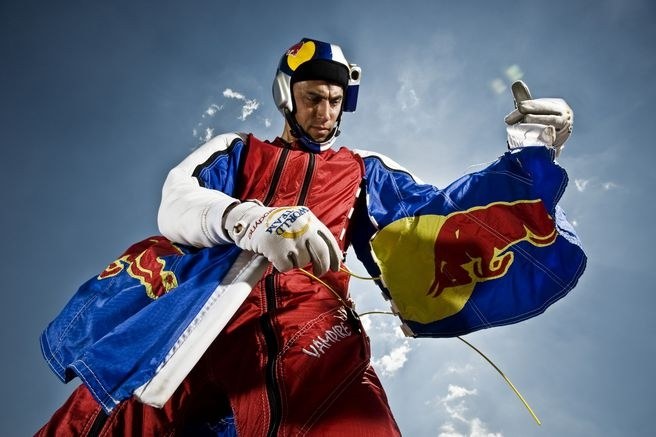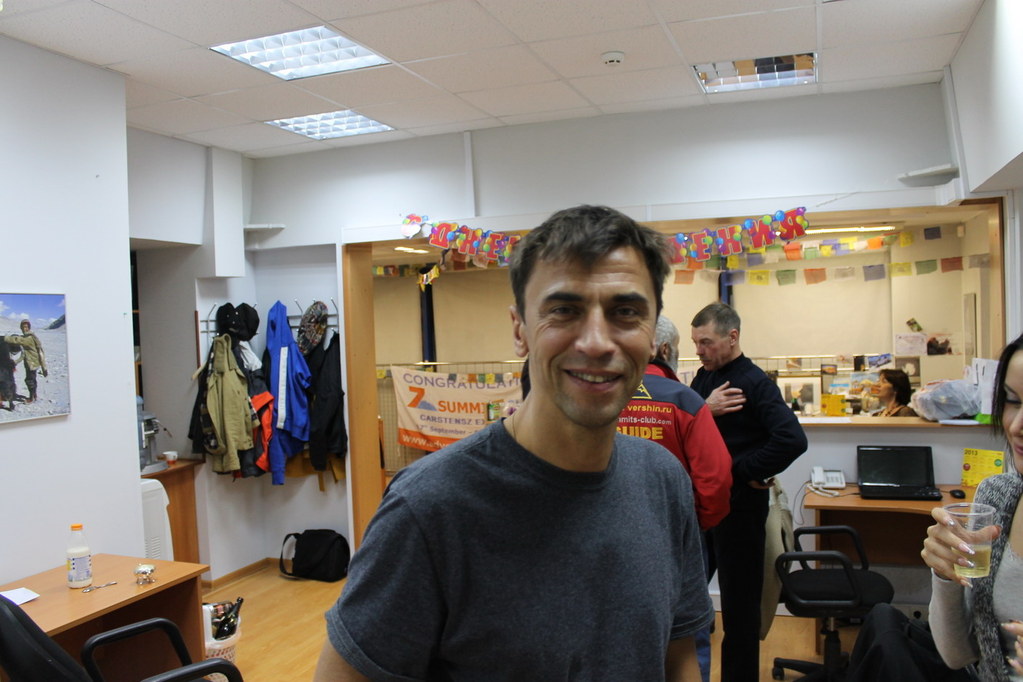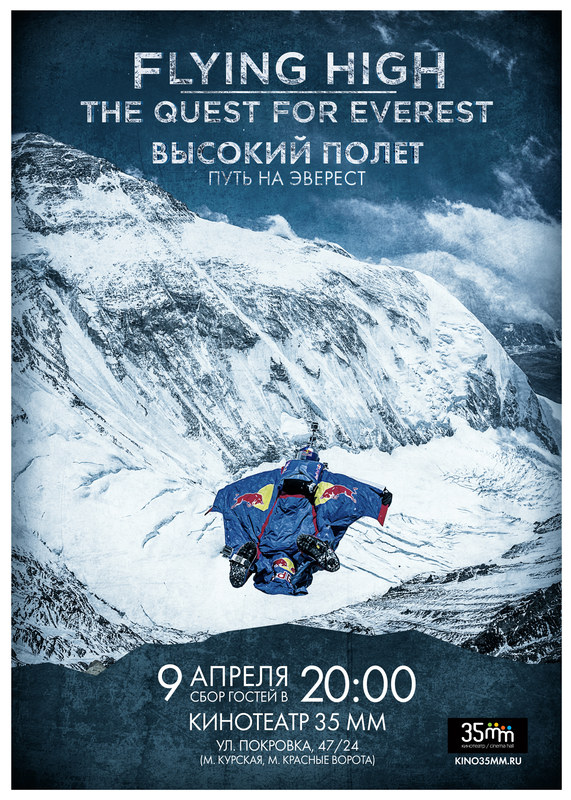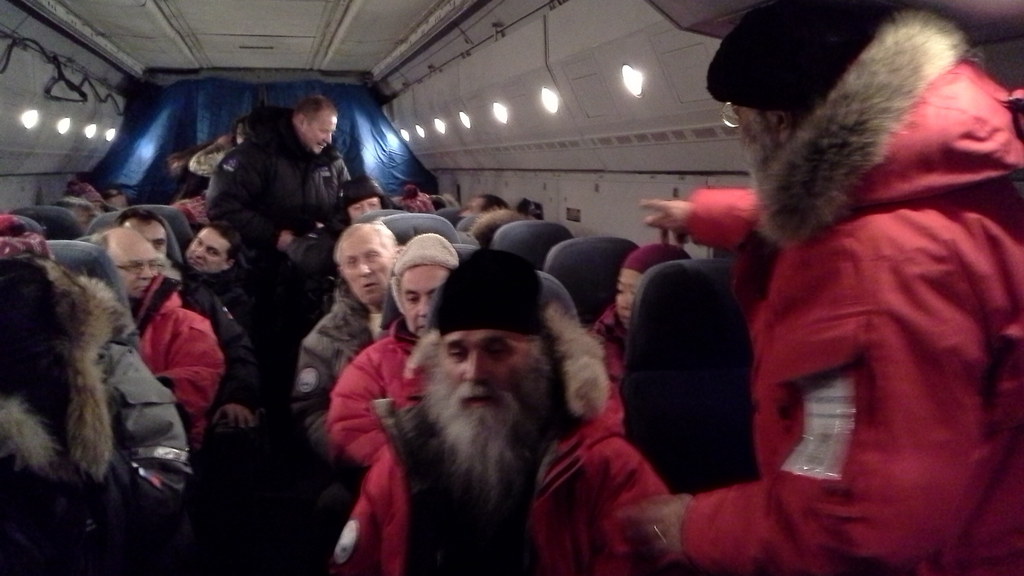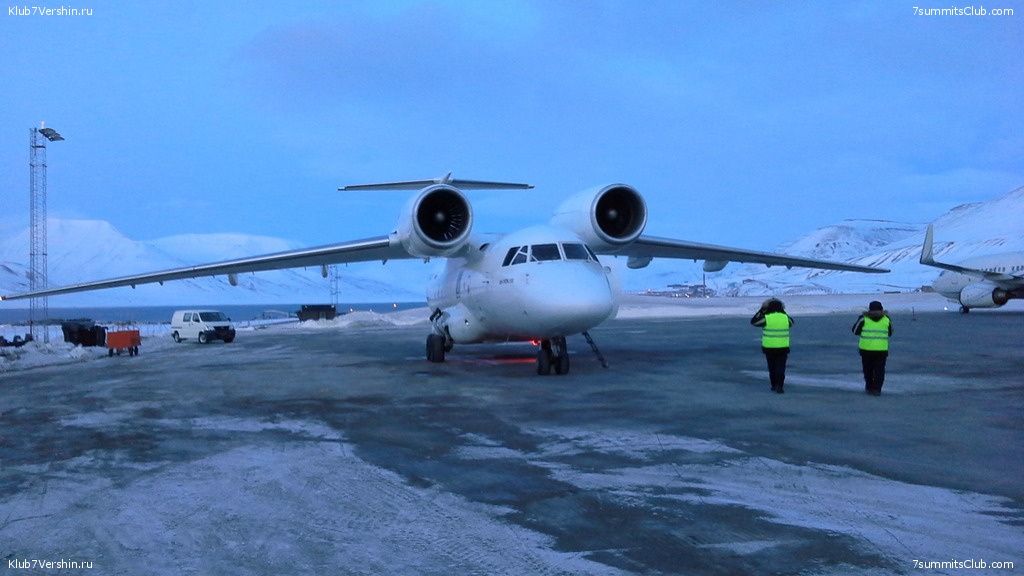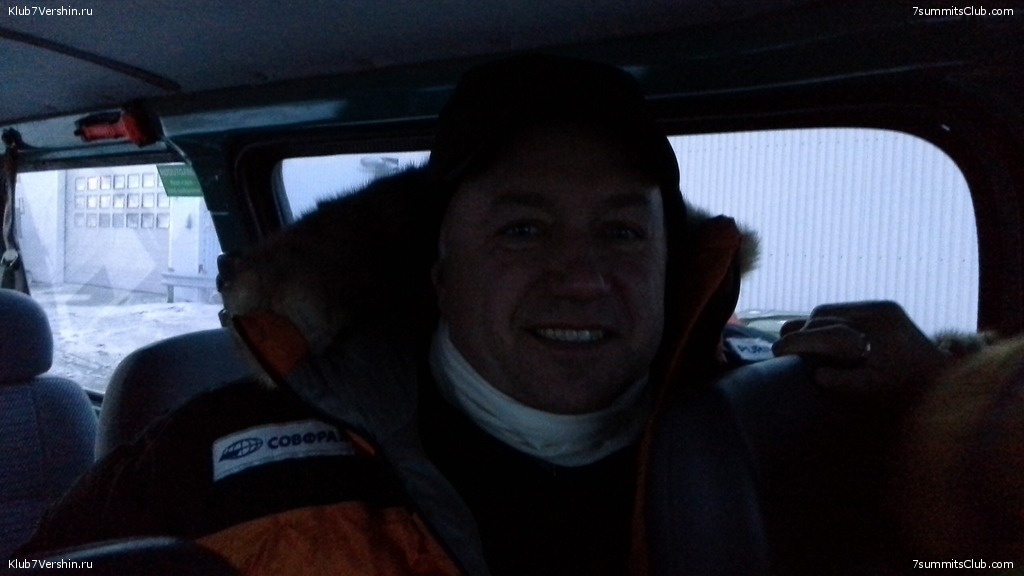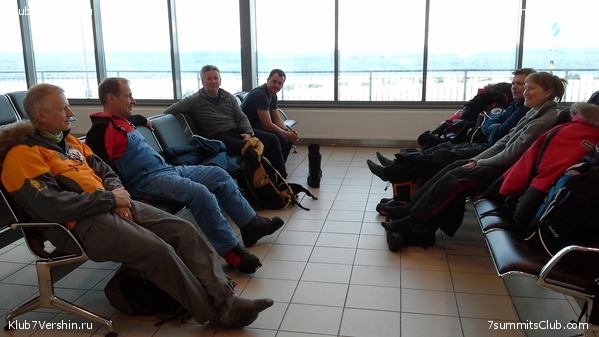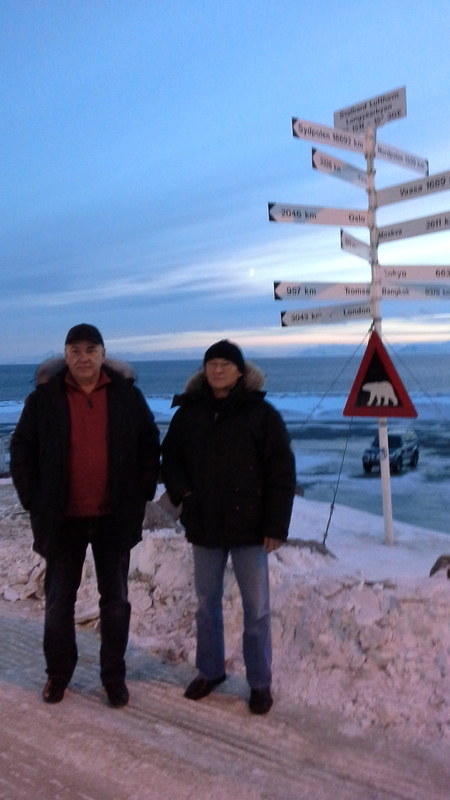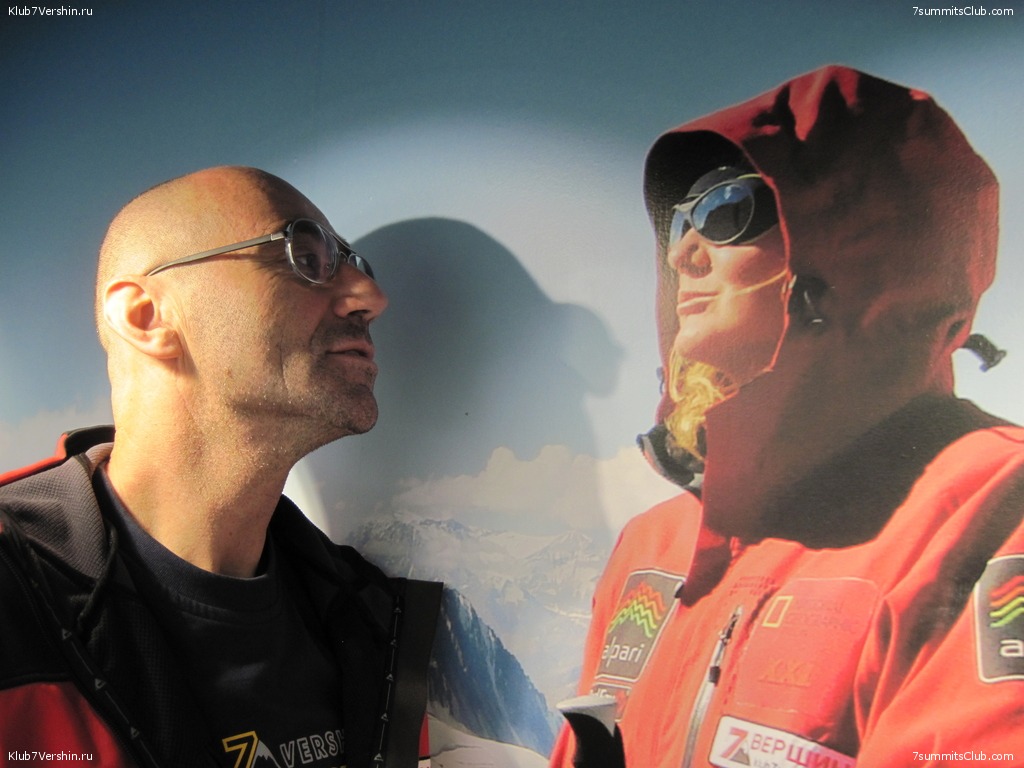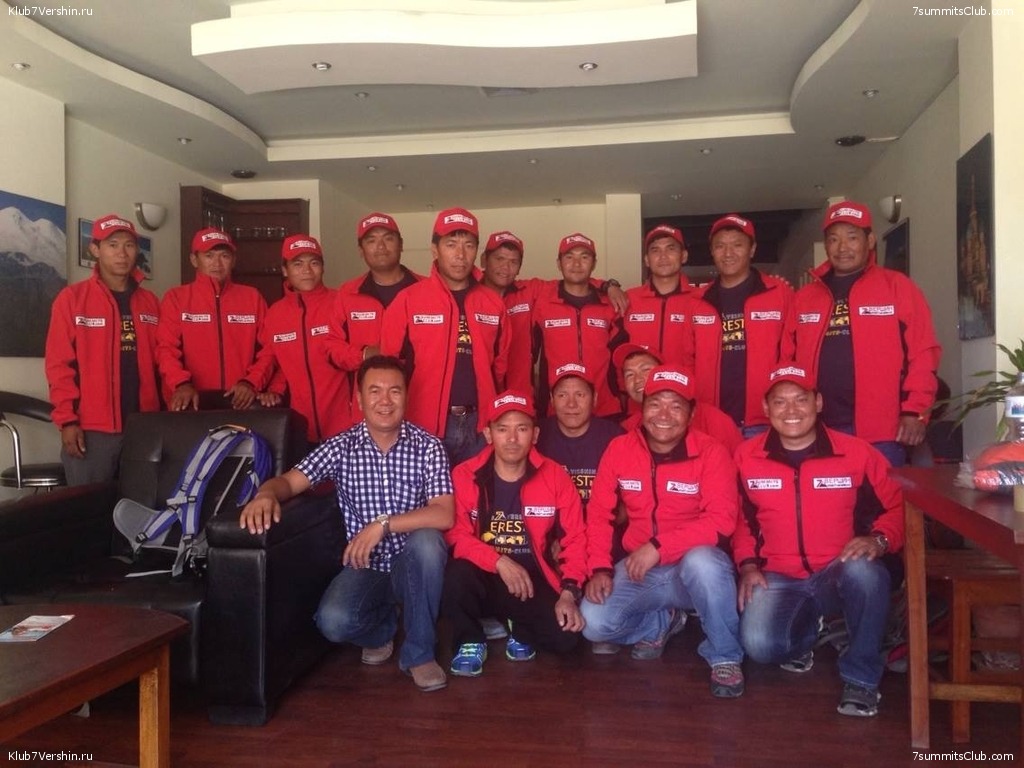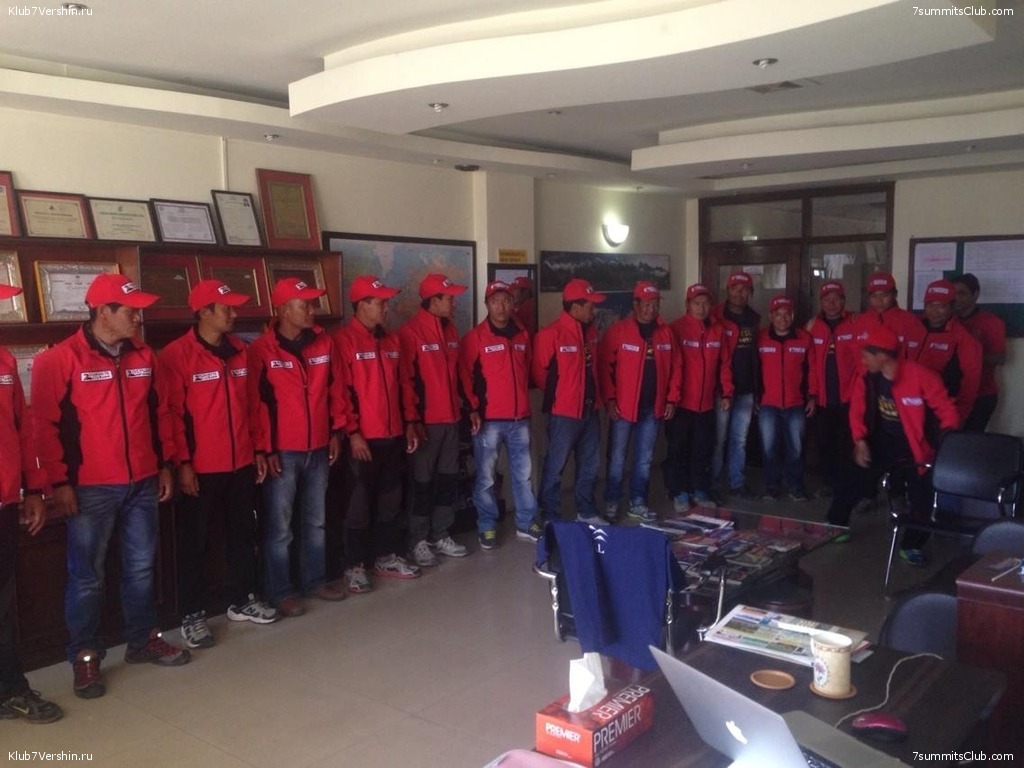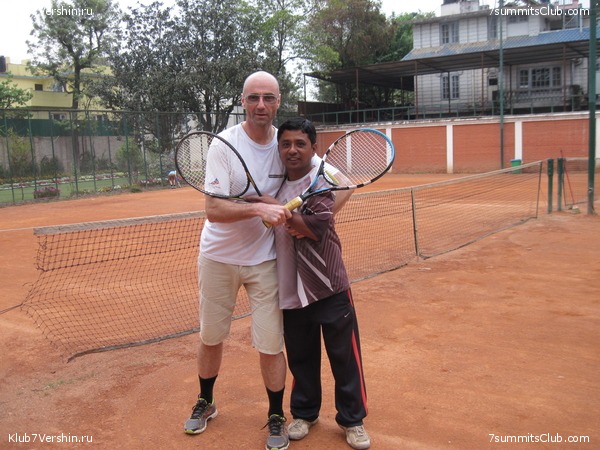"7 Summits + 2 Poles" project news - Page 143
Start of season for 7 Summits Club on Elbrus
Elbrus.
May 3rd the season of the 7 Summits Club" begins at Mt. Elbrus. Guide Alexandra Sack meets at the airport Mineralny Vody the first group of climbers on the highest point in Europe . The team consists of 8 people: Vassily Bumagin, ...
May 3rd the season of the 7 Summits Club" begins at Mt. Elbrus. Guide Alexandra Sack meets at the airport Mineralny Vody the first group of climbers on the highest point in Europe .
The team consists of 8 people:
Vassily Bumagin,
Nikolay Zhuravlev,
Maxim Malkov,
Eugene Kravt Sn,
Eugene Kravt Jn,
Dmitry Surikov,
Diarmuid Smyth,
Mark Toner.
We wish a good mood and good weather on the mountain and we invite everyone to join our group in June , July and August !
Do not forget that in the Elbrus region there is a representative of our company and the best in the area of mountaineering equipment rental ...
Office " 7 Summits Club " Terskol
daily from 10 to 20
indoor shop " 7 Summits Club "
Location : The village Terskol turn to Tcheget
Anna Abramova - branch coordinator
Office phone: +7-866-38- 17/07/71
Mobile : +7-928-711-97-70 , +7-928-720-26-94
E-mail: info@7vershin.ru
www.7vershin.ru
Our facility includes:
- Shop climbing equipment ;
- Rental of equipment;
- Agency for organizing climbing Elbrus ;
- School of Mountaineering (climbing, ice climbing, ski touring) ;
- Repair skis and equipment ;
- Information center ;
- Free wi-fi -24 hours.
At the May holidays in the Elbrus region is crowded:
Red Fox Company and Russian Mountaineering Federation with the support of Emercom of Russia, Government of the Republic of Kabardino-Balkaria and International Skyrunning Federation conduct VI International festival Red Fox Elbrus Race on May 3-11, 2014.
The competition will take place on the Elbrus peak, the highest top of the Europe and the most popular Russian mountain region.
For several years the Festival Red Fox Elbrus Race with two races of the Russian National Series (Elbrus Vertical SkyMarathon® and Elbrus Vertical Kilometer®) is one of the central events in the skyrunning world. Elbrus Vertical Kilometer® and Elbrus Vertical SkyMarathon® were included in Skyrunner® World Series and the 50 World Ranking races of 2013 year. The best mountaineers, skiers and multisportsmen from all over the world come to participate in the Festival.
Last year the Red Fox Elbrus Race distinguished by the record established by the Italian skyrunner Marco Facchinelli in the main event of the Festival. The athlete overcame the very hard distance with height more than 3000 meters difference from Azau's glade to the West Elbrus Peak only in 3 hours 30 minutes. And the ordinary person needs not less than 1 day to carry out the same route.
But more than likely this record will be broken in the Festival Red Fox Elbrus Race 2014. Even now the desire to participate in the most high-altitude race of the world was expressed by many leaders of international skyrunning.
Congratulations to our friends Harry and Ivana with the birth of their second son!
Everest.
Harry Kikstra and Ivan Corea now have two sons! We are very happy for them. And we hope to meet our friends somewhere in the vastness of our planet. Harry Kikstra means a lot for the program of the 7 Summits and we very much appreciate the ...
Harry Kikstra and Ivan Corea now have two sons! We are very happy for them. And we hope to meet our friends somewhere in the vastness of our planet. Harry Kikstra means a lot for the program of the 7 Summits and we very much appreciate the friendship with him. Continue to be happy, Harry, Ivana and two kids!
Alex and Harry - two Sevensummitsmen
In the Everest base camp (BC) at an altitude of 5200 meters were held most high international table tennis competitions
Almost all members of the group Everest climbers from 7 Summits Club took part in the competition. The event was held on the system "each with each" to 3 sets. Games stretched for almost the whole day. Chief judge of competitions was Ivona ...
Almost all members of the group Everest climbers from 7 Summits Club took part in the competition. The event was held on the system "each with each" to 3 sets. Games stretched for almost the whole day. Chief judge of competitions was Ivona Zadarnovska-Wingert from Poland (by the friendly nickname "merry Pole").
By the end of the competition day by scoring we identified leaders who again played each other for prizes. As a result, Vladislav Lachkarev from Siberian Irkutsk won first place, second place went to Irishman Derek Mahon, and third place – for charming Muscovite Natalia Matusowa.
Evening at the banquet table, the winner was awarded a prize - a bottle of expensive wine. Vladislav first wanted to retire with this bottle in his tent, but decided to split the prize between all team members. As Vlad said during a toast : "Better to be first in the base camp than on Everest a second ! "
Now, the team members are trained for the next competition - are preparing in billiards.
Everest 2014: After a rest at the base camp, part of the expedition went to rest lower
Alex Abramov from BC: Today, 11 members left in Old Tingri to lick their wounds. And remaining in the base camp 8 members staged bath. Sergei Larin - aka Doc, senior in the group, departing down. Ðó gives instructions on how to behave in a ...
Alex Abramov from BC:
Today, 11 members left in Old Tingri to lick their wounds. And remaining in the base camp 8 members staged bath.
Sergei Larin - aka Doc, senior in the group, departing down. Ðó gives instructions on how to behave in a civilized society and how to protect yourself from bird flu ...
Alex Abramov from ABC camp
Hello! It is Alex Abramov from the Everest expedition, the camp ABC, at 6400 meters. There, of course, real fridge yet. Very cold, wind . Today we went here without acclimatization. Since in the South all the expedition were canceled, now ...
Hello! It is Alex Abramov from the Everest expedition, the camp ABC, at 6400 meters. There, of course, real fridge yet. Very cold, wind . Today we went here without acclimatization. Since in the South all the expedition were canceled, now we are the great common hope. Because in the north there are about 100 climbers, of which 19 people – from the team of 7 Summits Club. Now we are the biggest expedition on Everest .. .... Descend to the base camp, then we will see. Tomorrow our Sherpas start to set up a camp on the North Col, at 7000 meters ... Goodbye!
Expedition made the first outing to the Middle camp
Today, our team made the first acclimatization outing to the Middle Camp, at 5800m. There was strong winds. It was very cold at night, but we survived. Everyone could feel like in the drama on Everest hero, 90 years before, attempts to ...
Today, our team made the first acclimatization outing to the Middle Camp, at 5800m. There was strong winds. It was very cold at night, but we survived. Everyone could feel like in the drama on Everest hero, 90 years before, attempts to climb Mallory and Irvine ...
Lake near Middle Camp
Alex Abramov rested for two days in Old Tingri
Alex: Because I had a bad cough and to prevent bronchitis, I went down for treatment at 1000 m below the base camp. To breathe "oxygen" and sleep in the warmth of the village of Old Tingri (altitude 4200m) . There I suddenly met a team of ...
Alex: Because I had a bad cough and to prevent bronchitis, I went down for treatment at 1000 m below the base camp. To breathe "oxygen" and sleep in the warmth of the village of Old Tingri (altitude 4200m) .
There I suddenly met a team of Alpine Club of MAI (Moscow Aviation University), which just drives into the base camp Cho Oyu. They are 6 climbers led by Misha Volkov. The meeting was held at the high and even higher than the high level and ended warm parting. They went on their way, I stayed in my den.
Tomorrow I go up to the base camp . Hello everyone !
The world record of Vitaly Simonovich
Reaching the North Pole by ski Vitaly Simonovich became the first person who made the collection: 7 Summits + 7 Volcanoes + 2 Poles
Reaching the North Pole by ski Vitaly Simonovich became the first person who made the collection: 7 Summits + 7 Volcanoes + 2 Poles
Photos from the North Pole expedition
Members of ski expedition to the North Pole (4-11 April 2014) returned home. Members of the expedition - Eugene KRAVT, Tatiana and Pavel Rodionov, Vitaly Simonovic Dmitry Moskaliev, Tom Mclver and dr. The group was led by an ...
Members of ski expedition to the North Pole (4-11 April 2014) returned home.
Members of the expedition - Eugene KRAVT, Tatiana and Pavel Rodionov, Vitaly Simonovic Dmitry Moskaliev, Tom Mclver and dr.
The group was led by an experienced guide polar - Mikhail Lomakin.
Group almost entirely passed "last degree" and reached the North Pole, where they have already met Paul and Kostrykin Aleftina Bocharov.
The expedition came to Lhasa
Everest.
Our expedition flew to Lhasa. The trek to Mount Everest begins. Alex mer his friend Nima Tsering, the Ministr of Sport of Tibet, Everest summiter. Entertement in Lhasa.
Our expedition flew to Lhasa. The trek to Mount Everest begins.
Alex mer his friend Nima Tsering, the Ministr of Sport of Tibet, Everest summiter.
Entertement in Lhasa.
Film Flying High about Everest base jump of Valery Rozov was shown in Moscow
Everest.
Russian extreme BASE-jumper and wingsuit pilot Valery Rozov sets out to accomplish the highest BASE-jump and wingsuit flight in the history of mankind from the Everest mounain range. The adventure turns out to be a two year slog of ...
Russian extreme BASE-jumper and wingsuit pilot Valery Rozov sets out to accomplish the highest BASE-jump and wingsuit flight in the history of mankind from the Everest mounain range. The adventure turns out to be a two year slog of test jumps, measurements and frantically searching the perfect wingsuit design for an altitude flight in thin air. A new record jump off Matterhorn (4.478 m) and the first wingsuit flight from Mount Shivling (6543 m) in India turn into precursors for the final leap...
We present the 7 Summits Club Everest expedition 2014
Everest.
Today - the official day of start of the 7 Summits Club expedition to Everest. The main part of members of expeditions arrived in Kathmandu today. Everything is going normally. Expedition is large, probably the second or third largest on ...
Today - the official day of start of the 7 Summits Club expedition to Everest. The main part of members of expeditions arrived in Kathmandu today. Everything is going normally. Expedition is large, probably the second or third largest on both sides of Mount Everest, the biggest on the North side.
The expedition : 15 climbers and 4 guide.
And numerous group of Sherpas , led by Mingma Gelu.
Traditional reception at the Russian Embassy . With us Israfil Ashurly and Firuz Dadashov from Azerbaijan who go on Shishapangma.
The premiere of the film Flying High. The Quest for Everest
Everest from Nepal.
On 9th April, in the cinema «35 mm» - a premiere of the film about the record of base-jumping. In may 2013 Valery Rozov has made a record height of base jumping from 7,220 m above sea level. After 60 years since the first ascent ...
On 9th April, in the cinema «35 mm» - a premiere of the film about the record of base-jumping.
In may 2013 Valery Rozov has made a record height of base jumping from 7,220 m above sea level. After 60 years since the first ascent to the highest peak of the world, a video with a man flying in a wingsuit over an array of Mount Everest, has opened a new Chapter in the history of conquer the summit.
By the documentary Flying High The Quest for Everest, the history of record base jump Valery Rozov will be understandable and interesting even for the uninitiated viewer. The picture reveals details of the project, telling about several years of preparation, all the difficulties of the ascent and the jump. Unique footage shows a man and a team who are willing to risk much, for the sake of the goal set and incredible feeling of flight.
April 9, everyone will be able to see the movie Flying High. The Quest for Everest at the premiere screening at the cinema «35 mm», and also to ask all questions of its main character - Valery Rozov.
Address: Moscow, M. Krasnye Vorota, Pokrovka street, 47/24.
Guests gather - 20.00
To start showing - 20.30
Free entrance
Trailer
North Pole season goes on. Artur Chilingarov came to the base Barneo
Hello! In Longyear on Spitsbergen everything was okay. Every day, group after group fly to Barneo, we have two flights a day. This morning, a group of Russian scientists flew ice and evening flight was sent with a group of plane Artur ...
Hello! In Longyear on Spitsbergen everything was okay. Every day, group after group fly to Barneo, we have two flights a day. This morning, a group of Russian scientists flew ice and evening flight was sent with a group of plane Artur Chilingarov. On Barneo they plan to hold a friendly football match between the local staff team and the team of Arthur Chilingarov.
Meanwhile ... our ski groups continue to move in the direction of the North Pole, along the programme Last degree (111 km ). Also, the group of Rick Schweitzer sled dog continues to move.
In the area of the camp Barneo was seen three polar bears. Borneo urgently requested to hand in these additional weapons, and that was done.
Alex Abramov photographed with Luda Korobeshko in Kathmandu
Everest.
Alex with his tennis coach... The new store Red Fox was opened recently in Kathmandu. And Luda Korobeshko represents a major showcase... Alex joined his wife (øò fact, she is in Moscow) in the showcase window. ...
Alex with his tennis coach...
The new store Red Fox was opened recently in Kathmandu. And Luda Korobeshko represents a major showcase...
Alex joined his wife (øò fact, she is in Moscow) in the showcase window. Right on seen the royal palace...
Alex and Israfil Ashurly in the store Red Fox in Kathmandu...
Israfil with Firuz Dadashov (right) goes on Shisha Pangma. All purchases made, and nonsymbolic...
Sherpas expedition 7 Summits Club are preparing to travel to Everest...
Guides 7 Summits Club Sergei Larin and Dmitry Ermakov fly to Nepal...
Kilimanjaro: SUMMIT! The group descended to the Horombo hut ...
Kilimanjaro.
Seven Summits, hello! This Tanzania, Horombo hut. Very tight-knit group we have today ... We all reached the top of Uhuru Peak, all are in excellent condition. Now we are almost down to Horombo hut. We stand 100 meters above. We've got a ...
Seven Summits, hello! This Tanzania, Horombo hut. Very tight-knit group we have today ... We all reached the top of Uhuru Peak, all are in excellent condition. Now we are almost down to Horombo hut. We stand 100 meters above. We've got a connection with our guiding company, therefore, we decided to call you now. Tomorrow our mountainous part is over, clients go through a day on safari. Once more - hello! Artem Rostovtsev.


